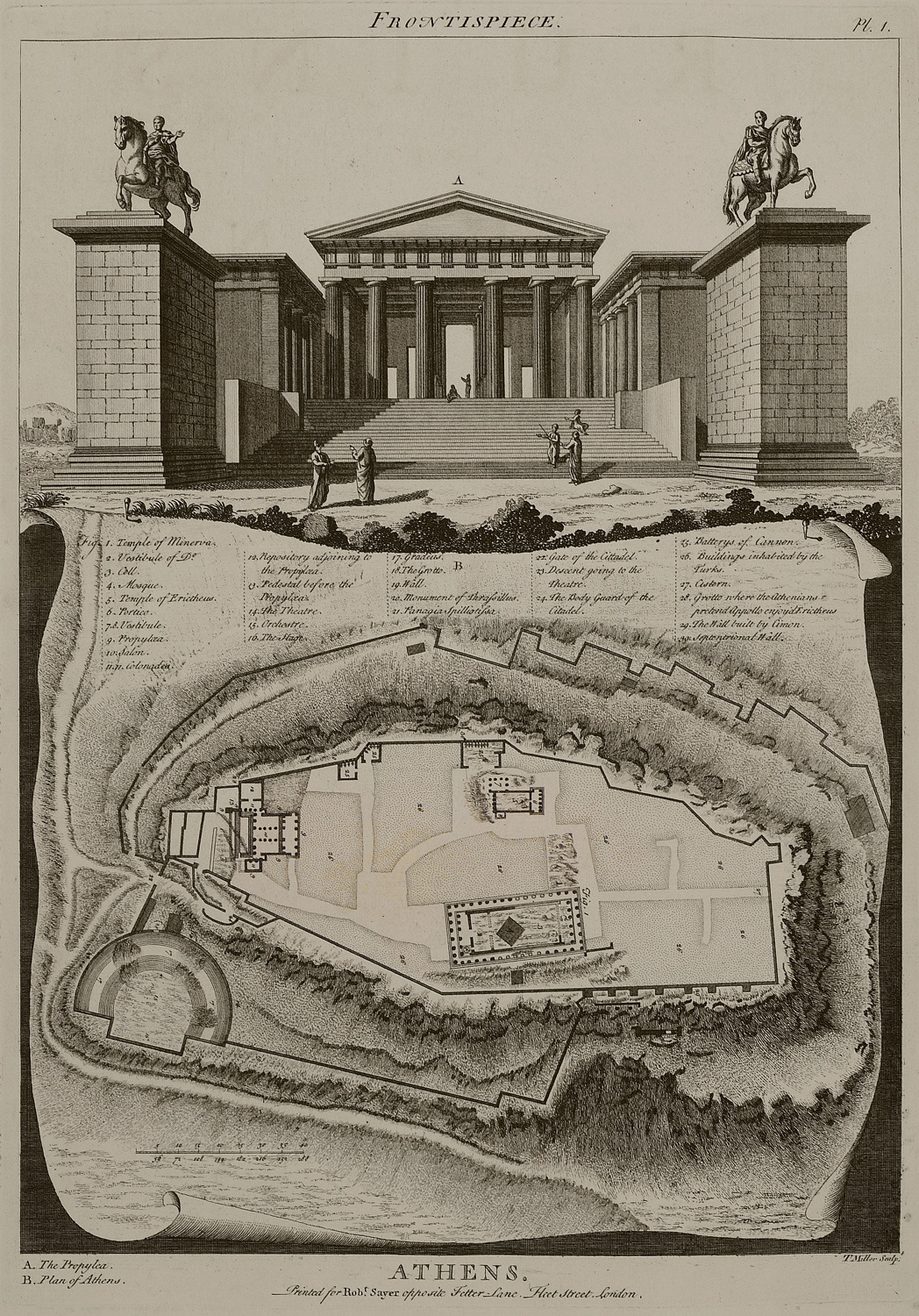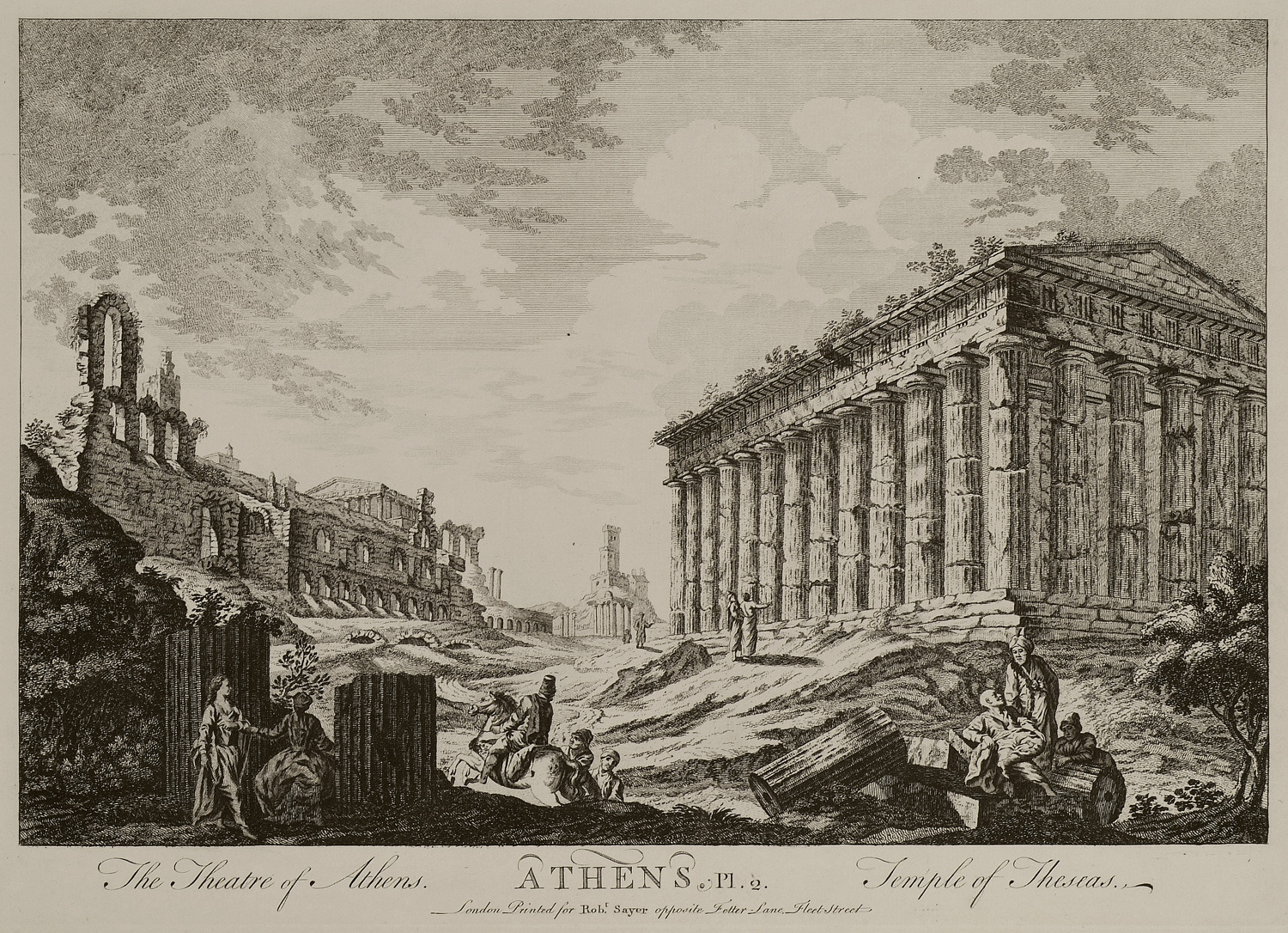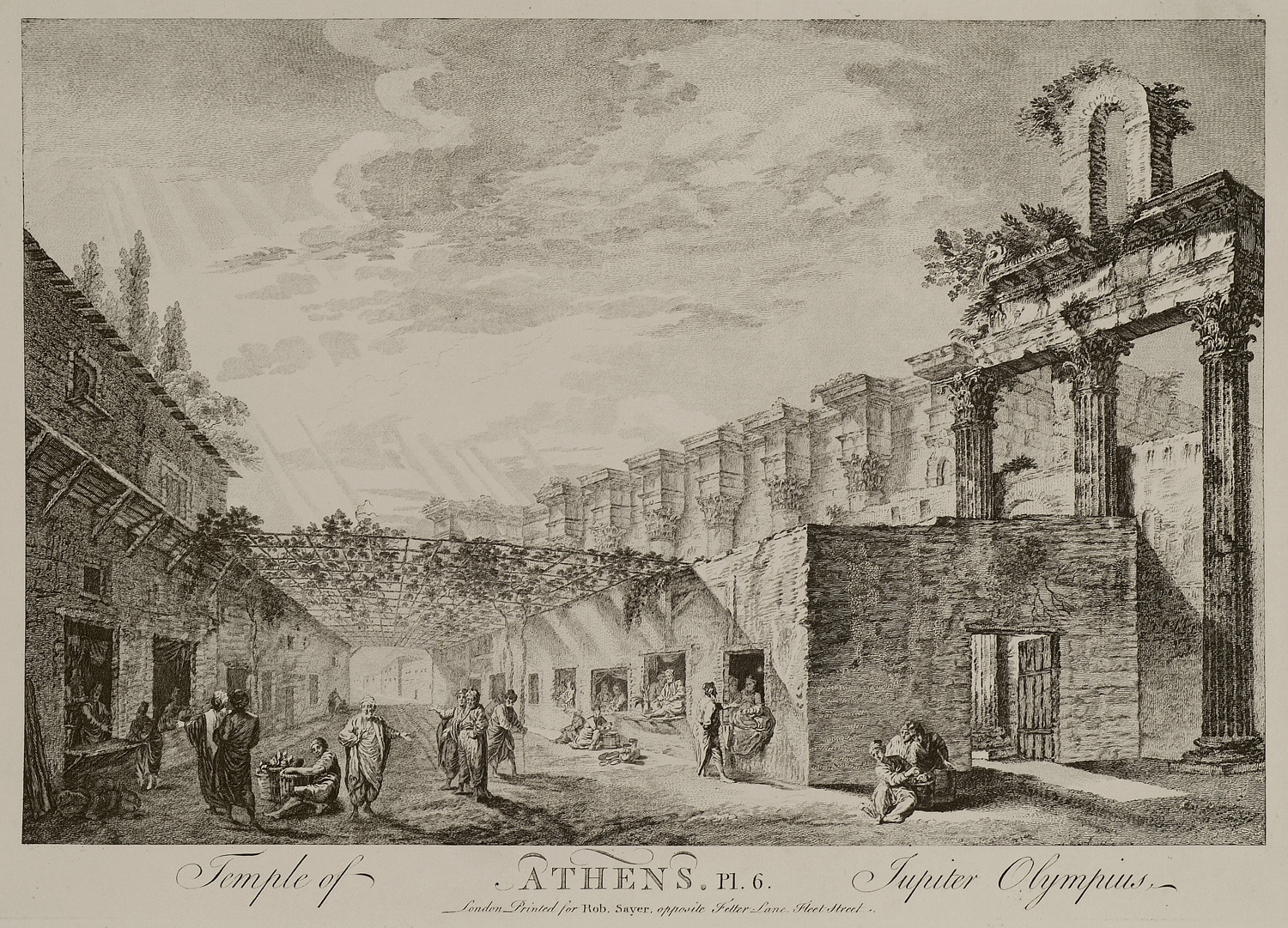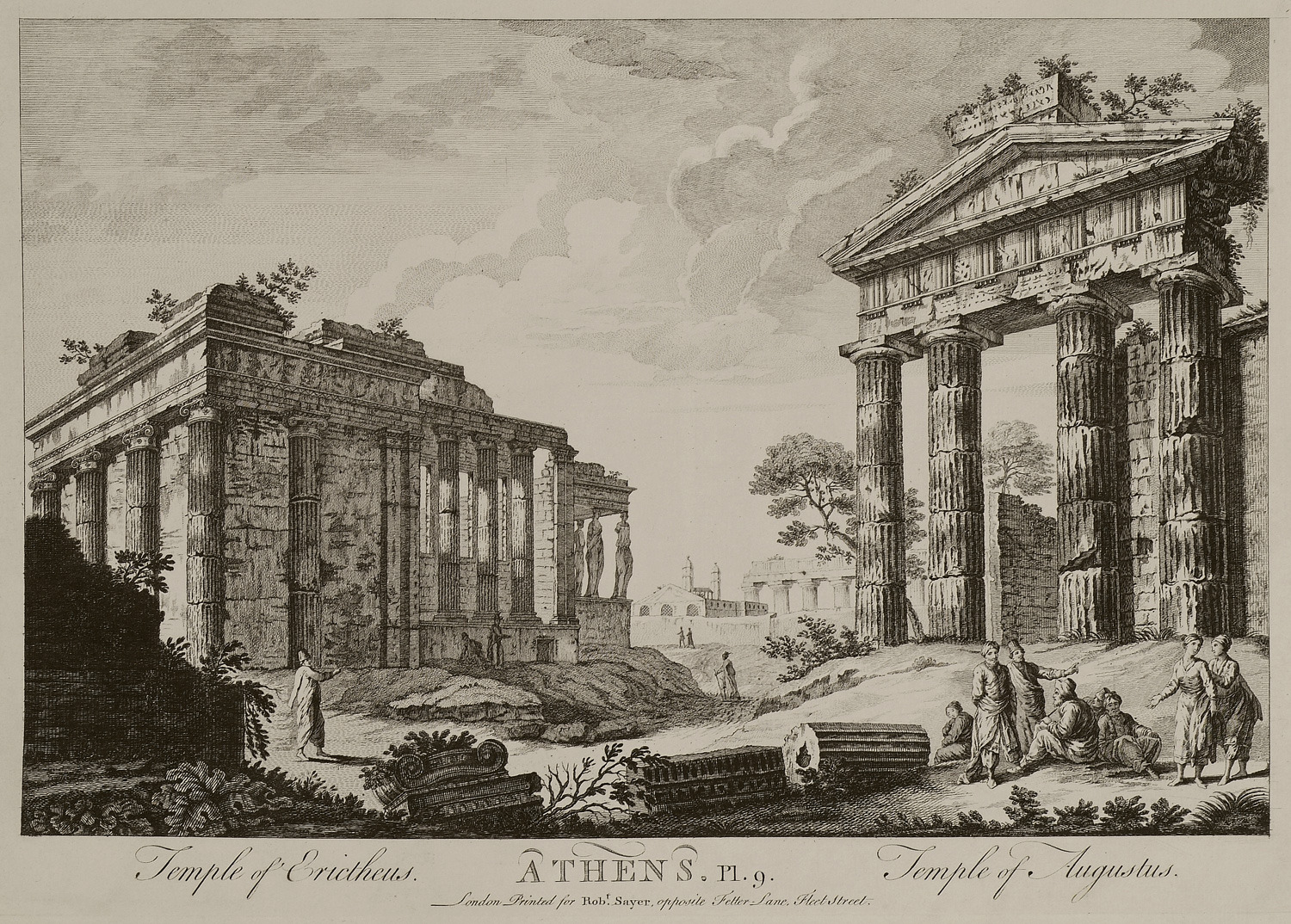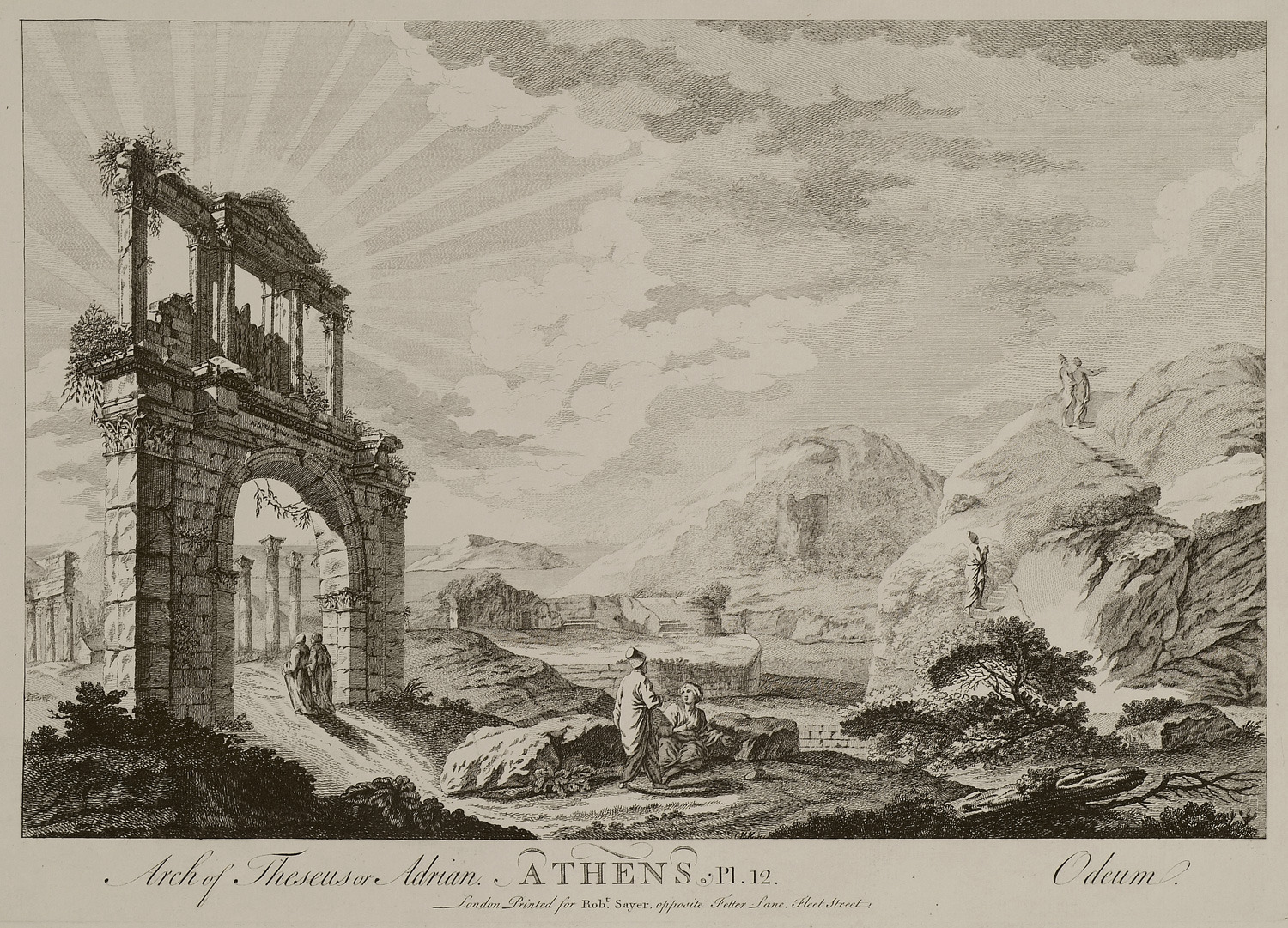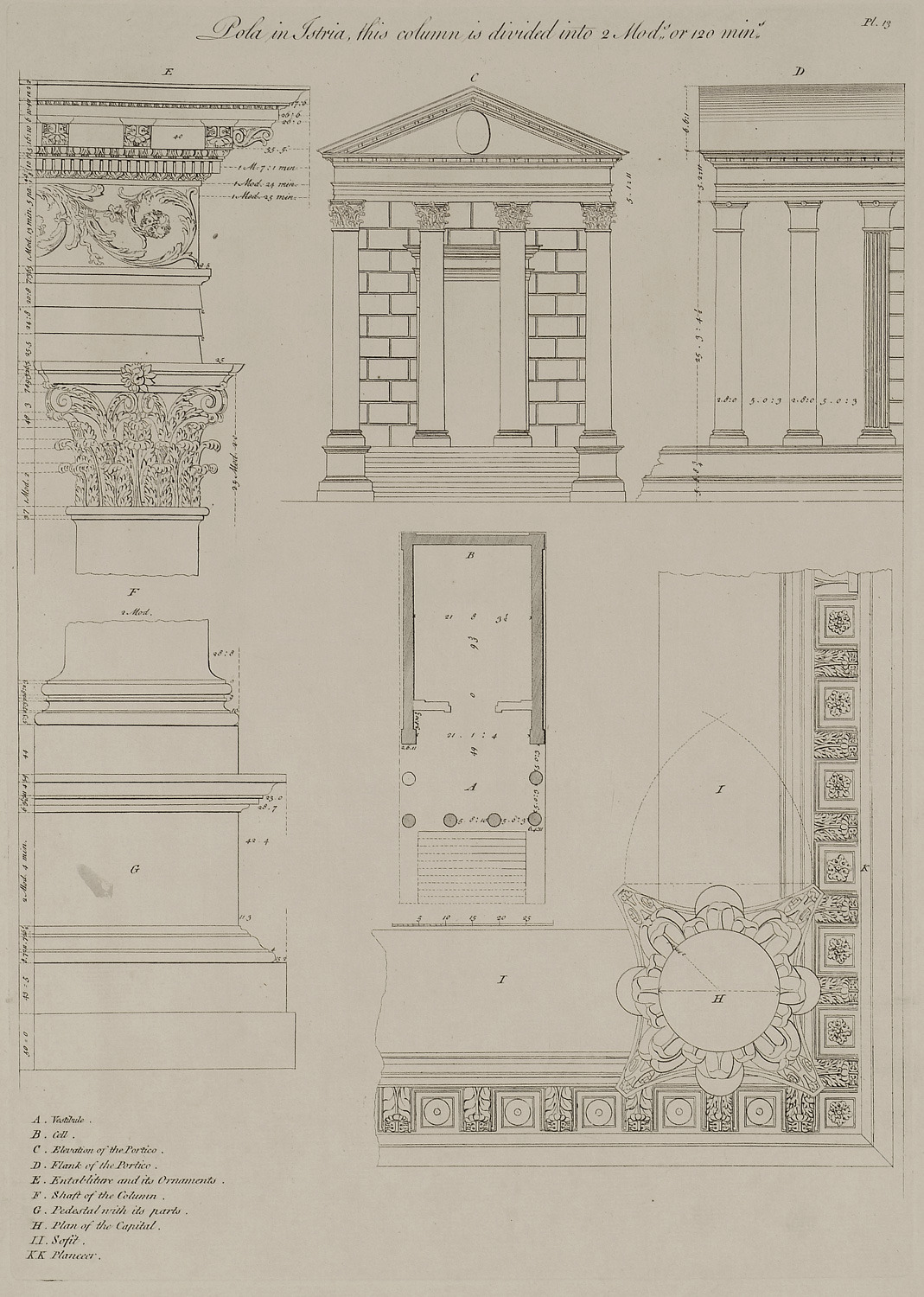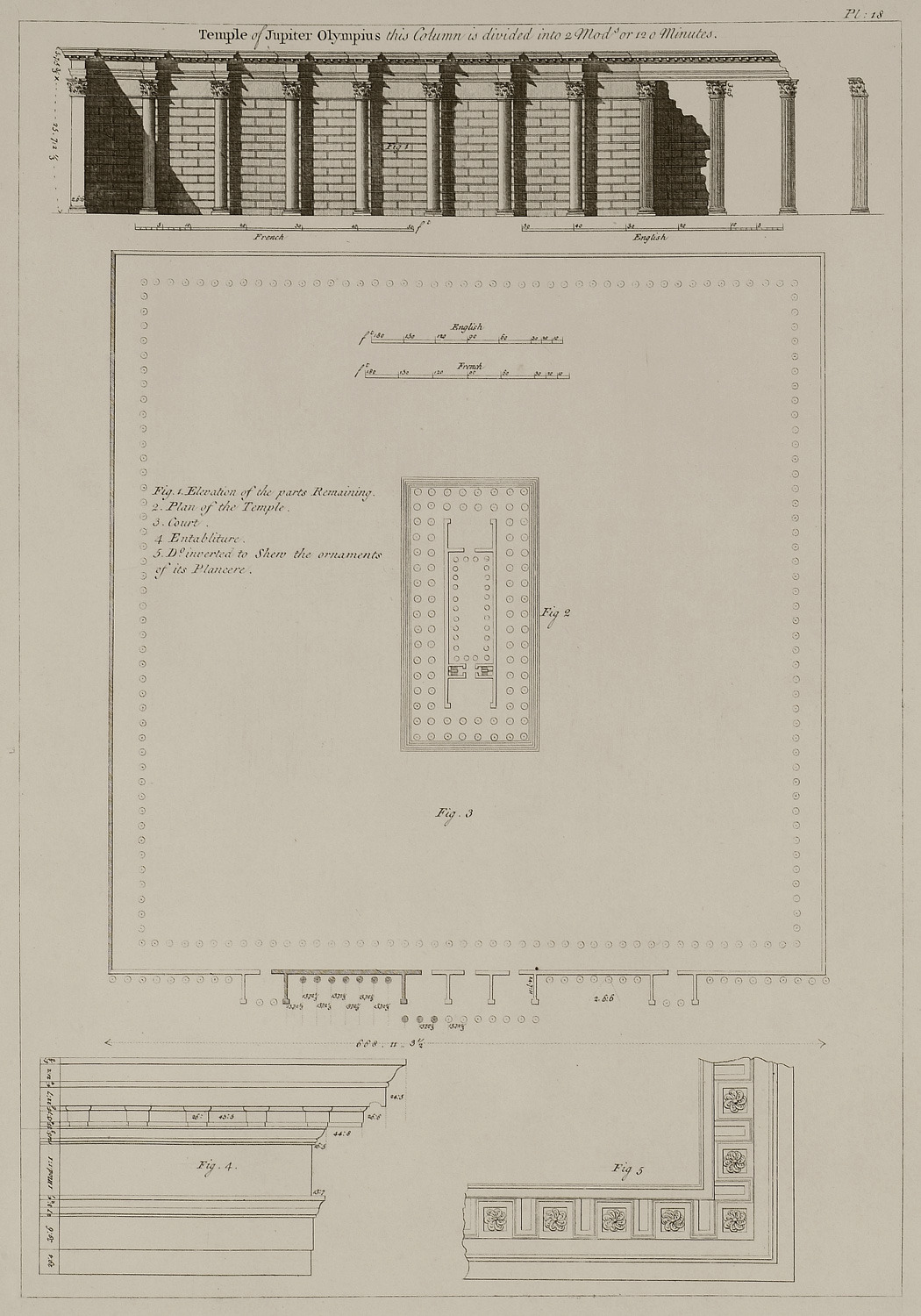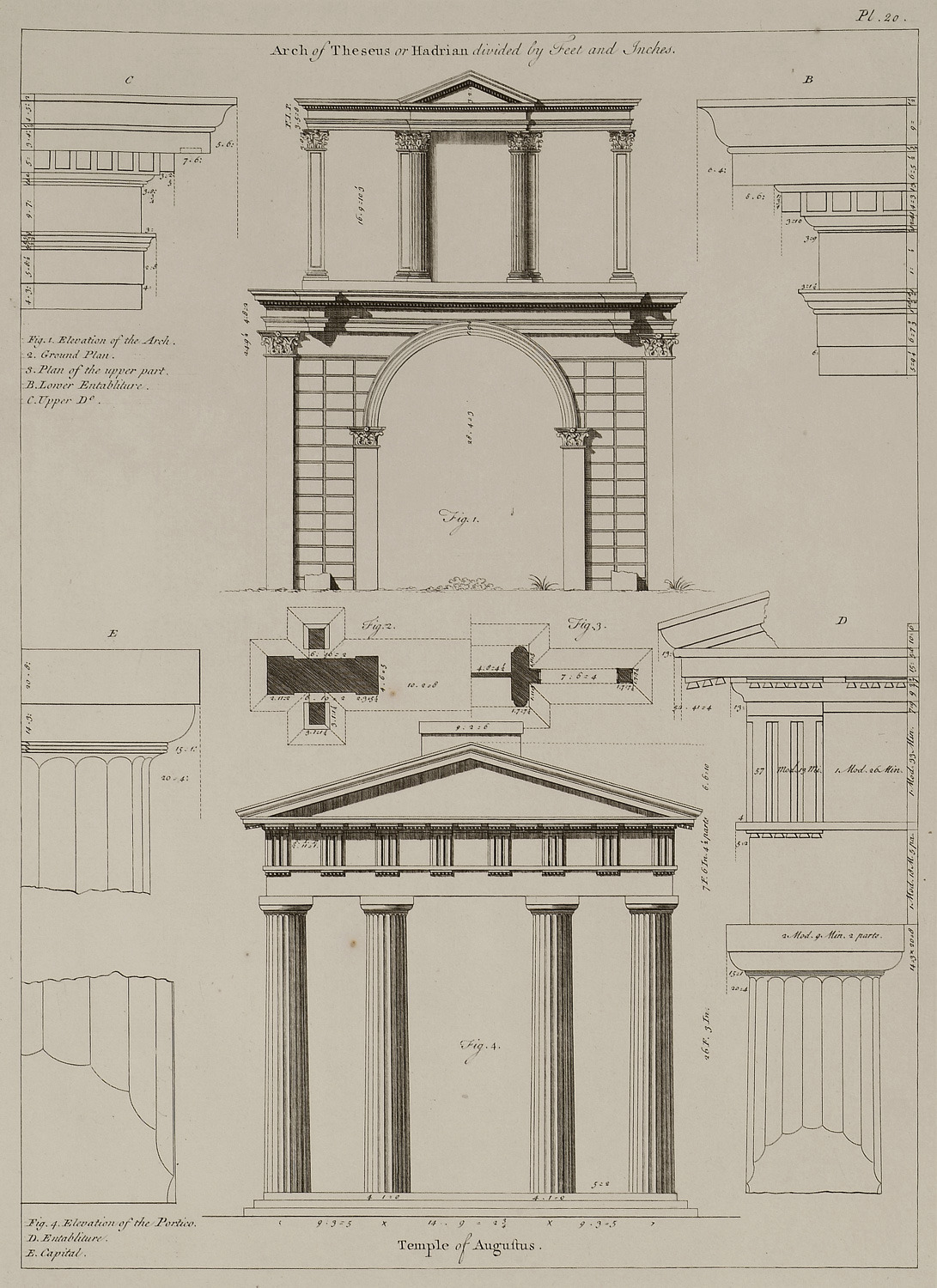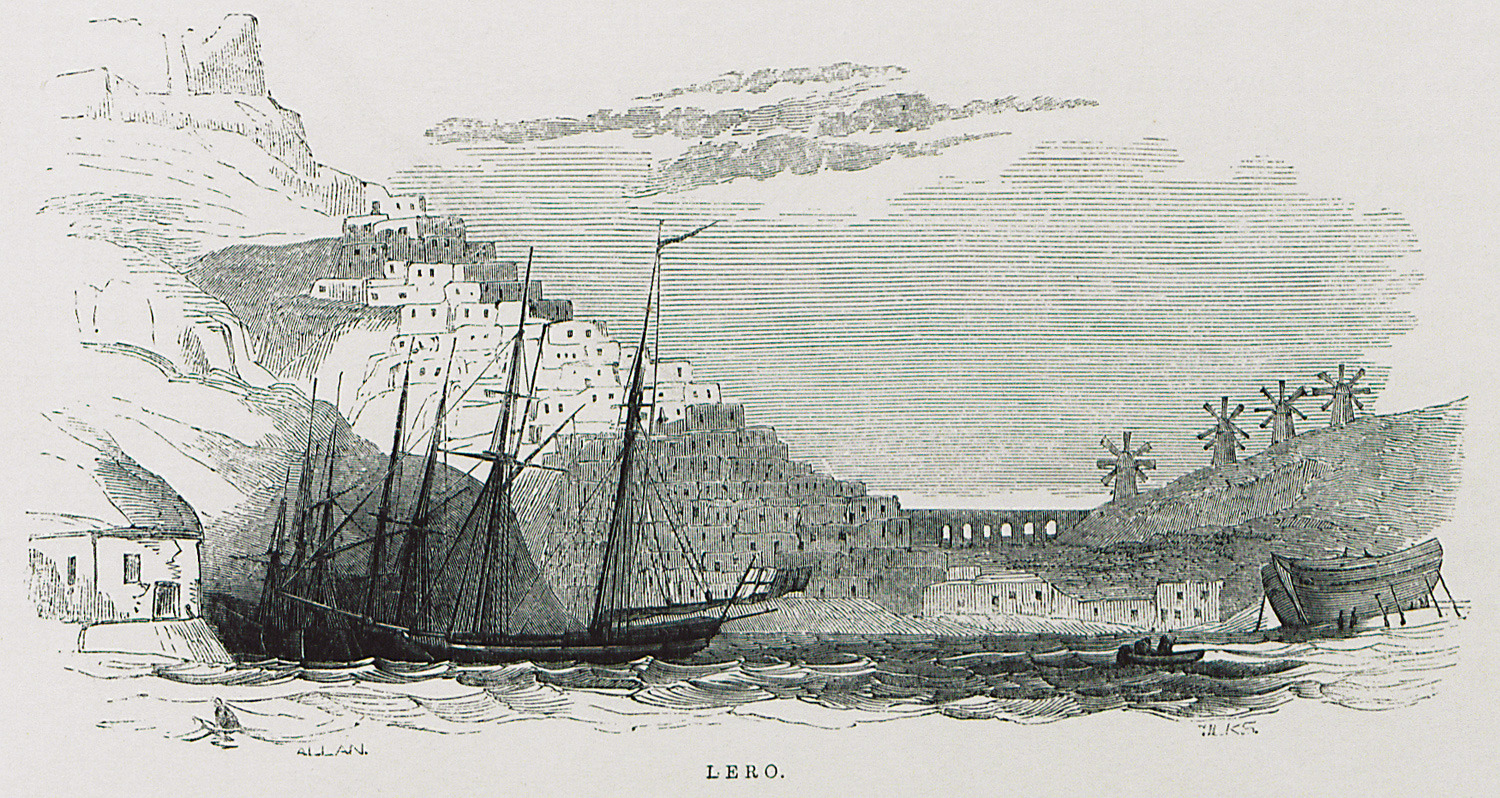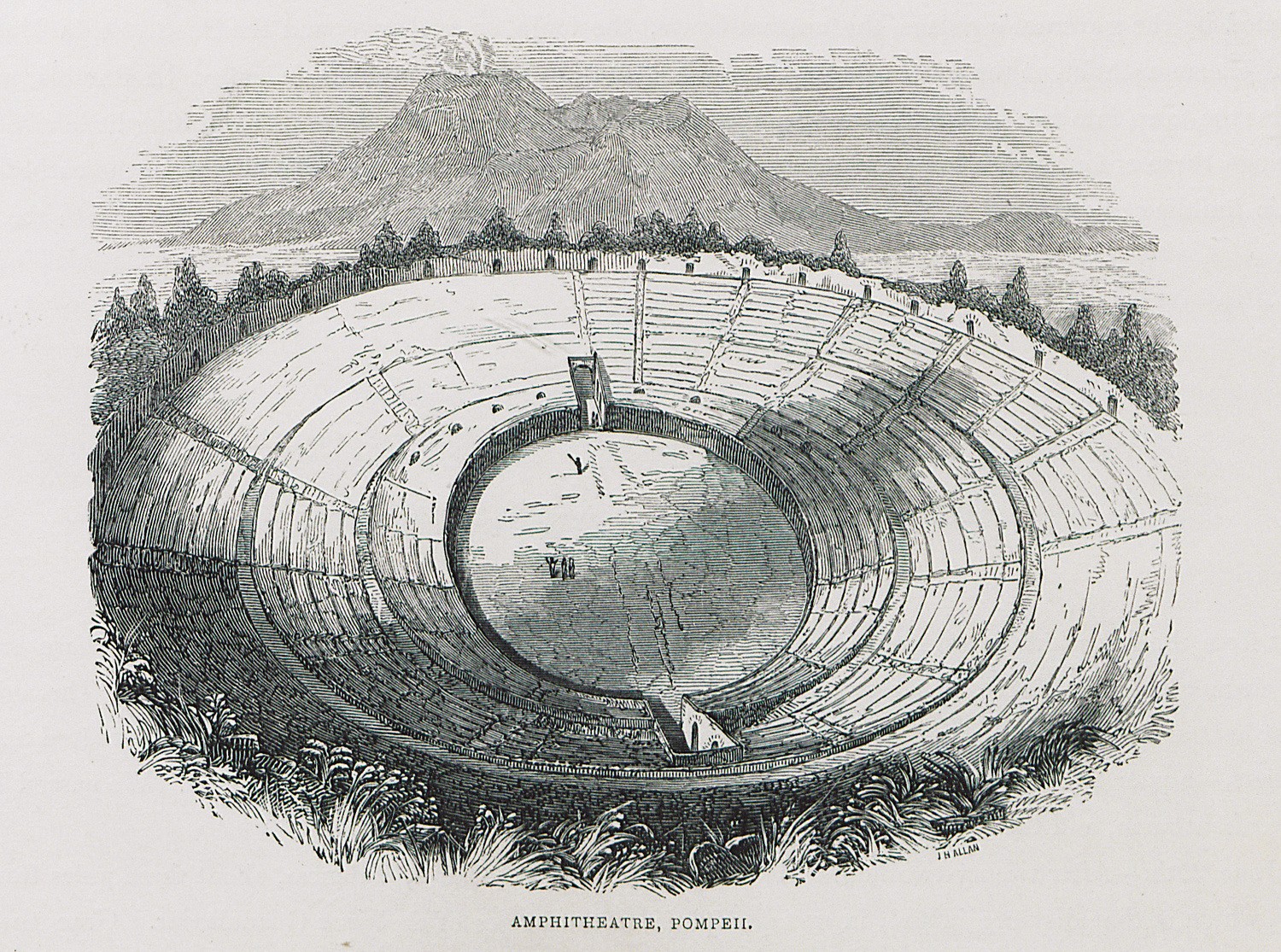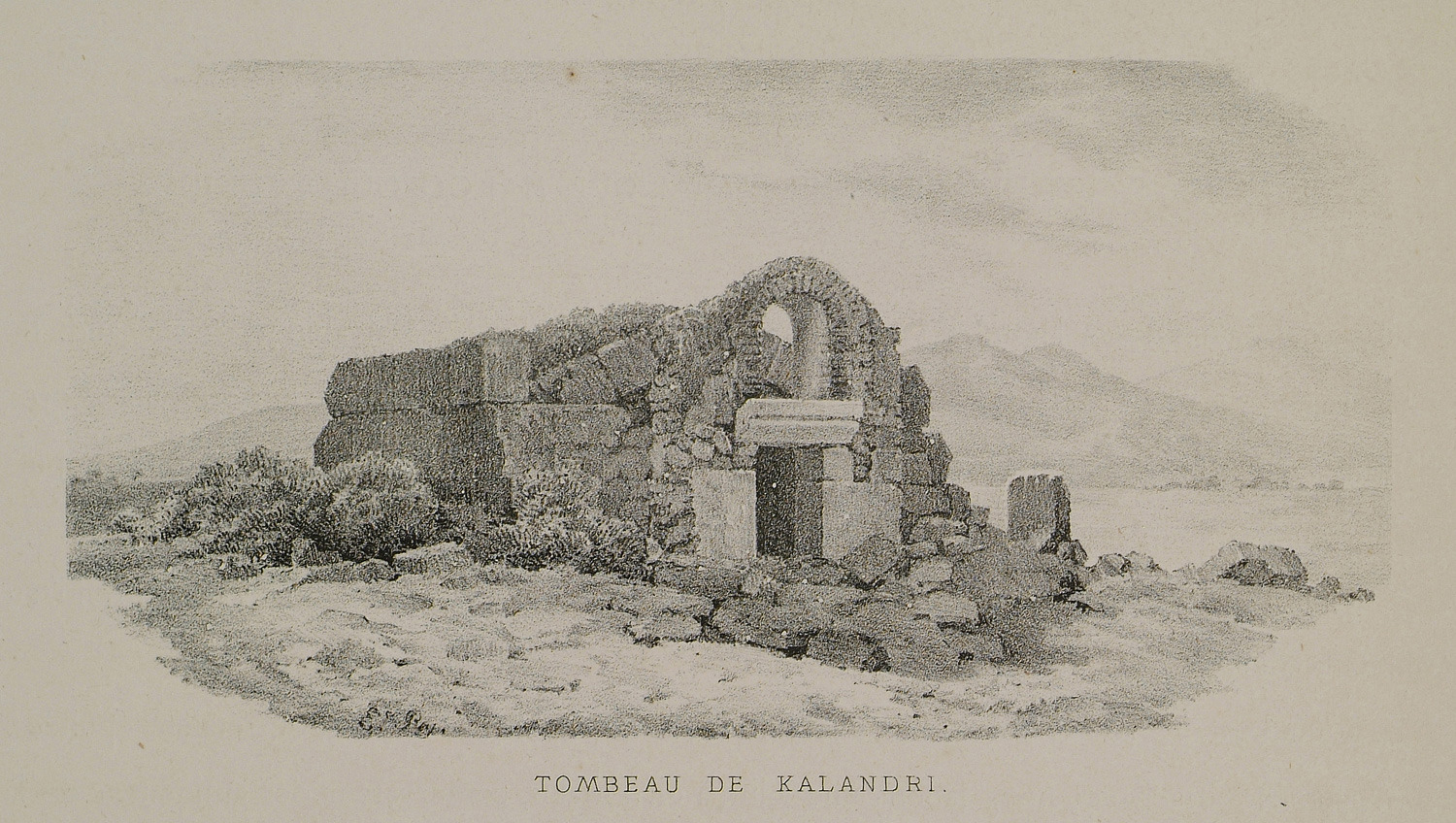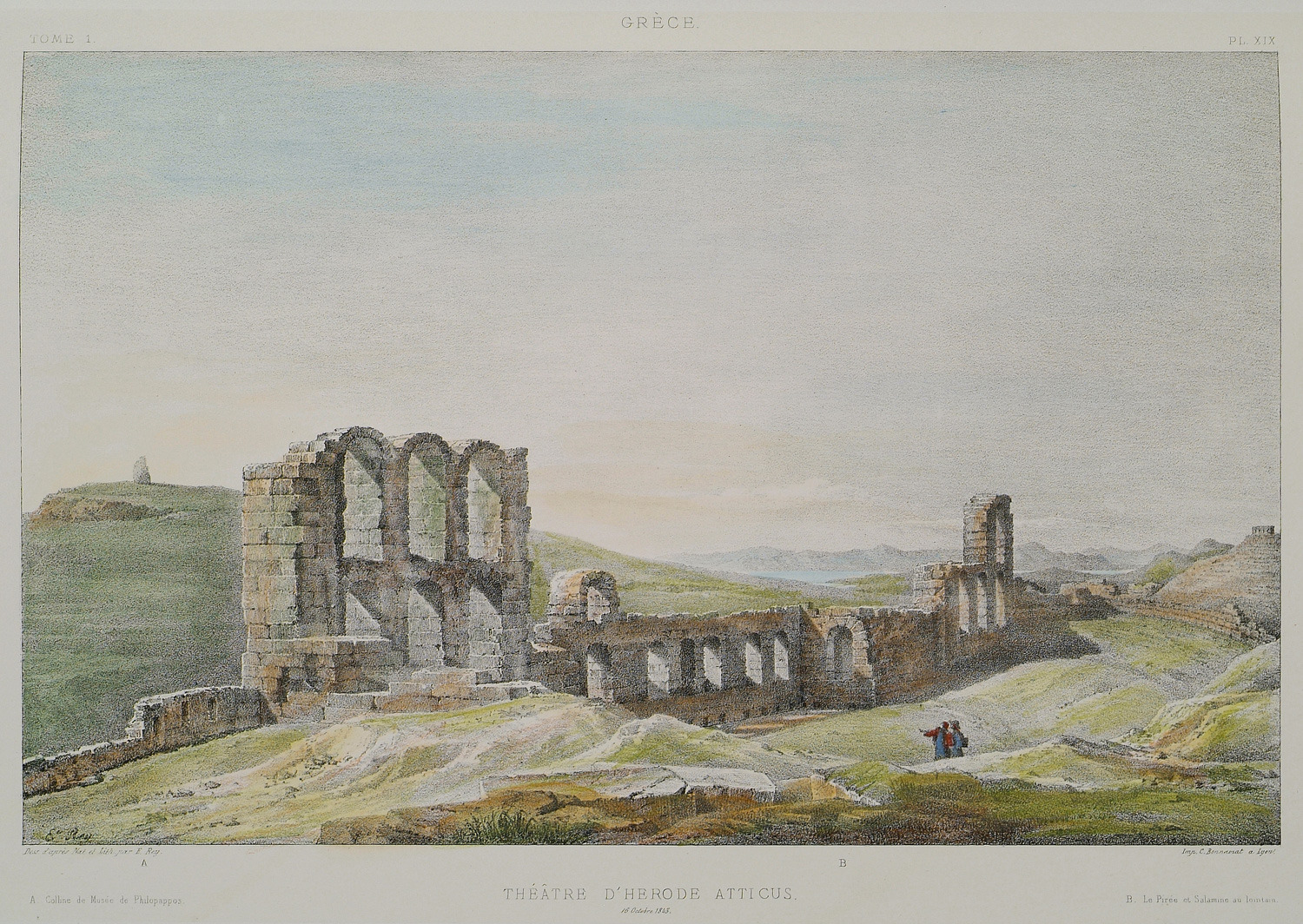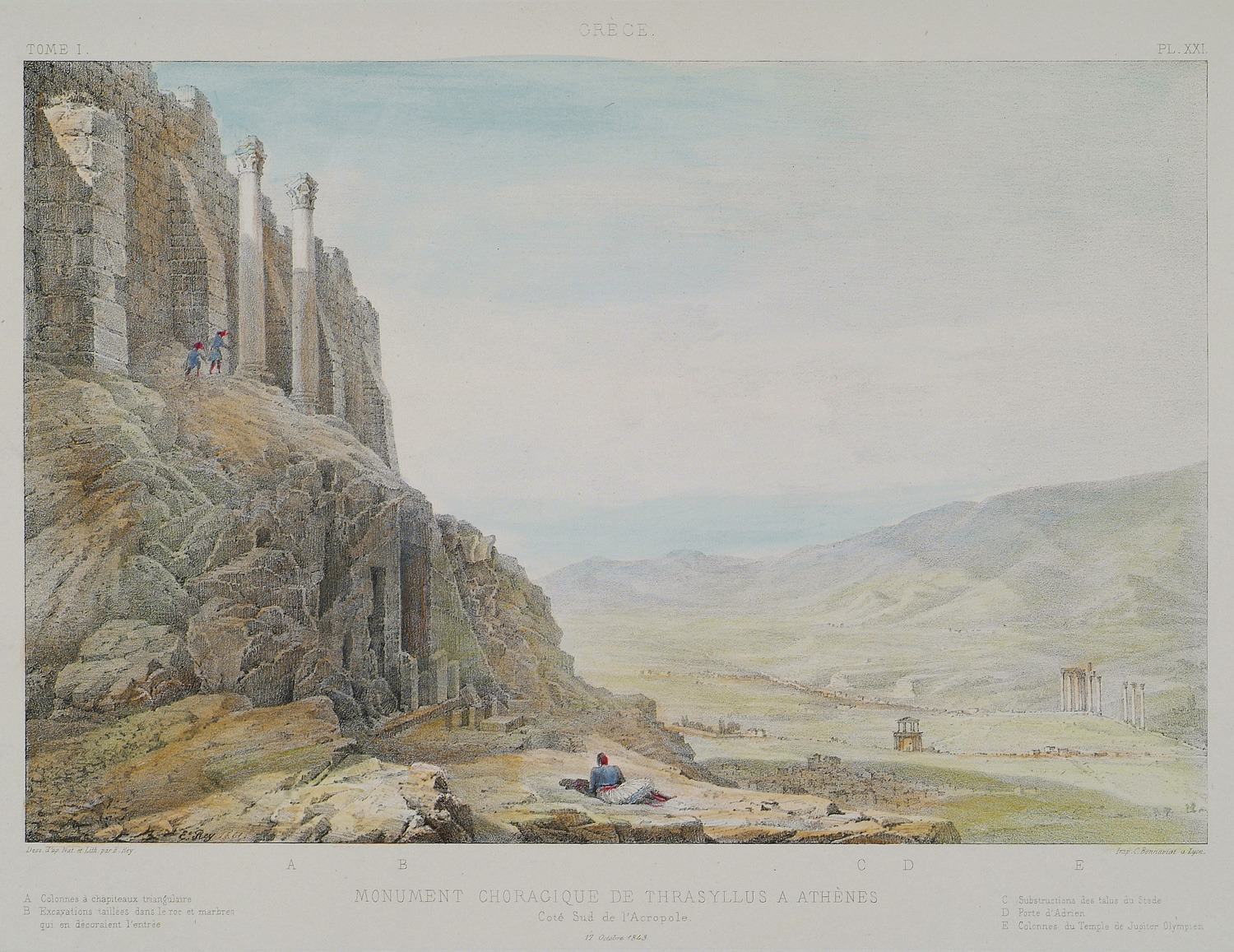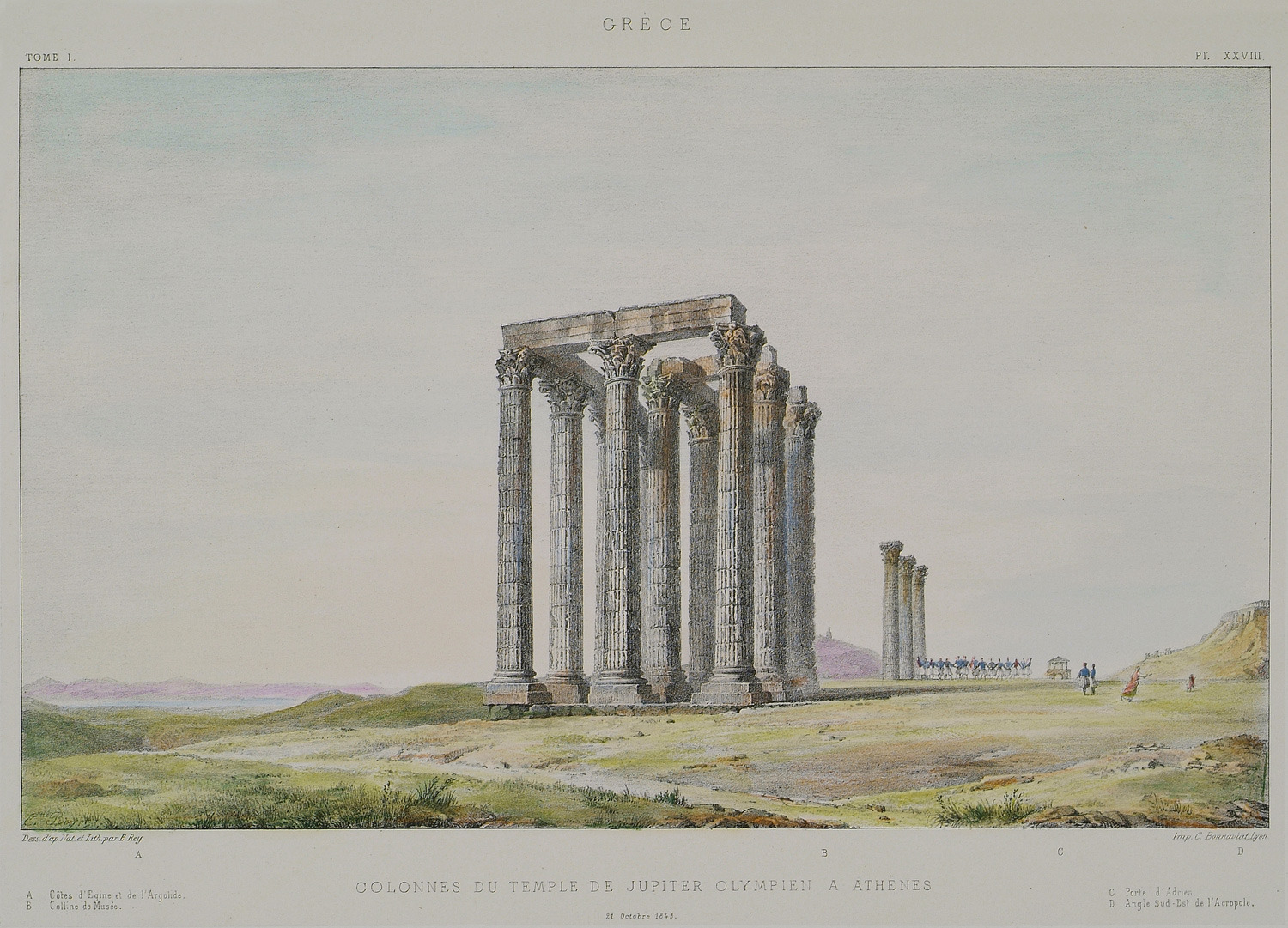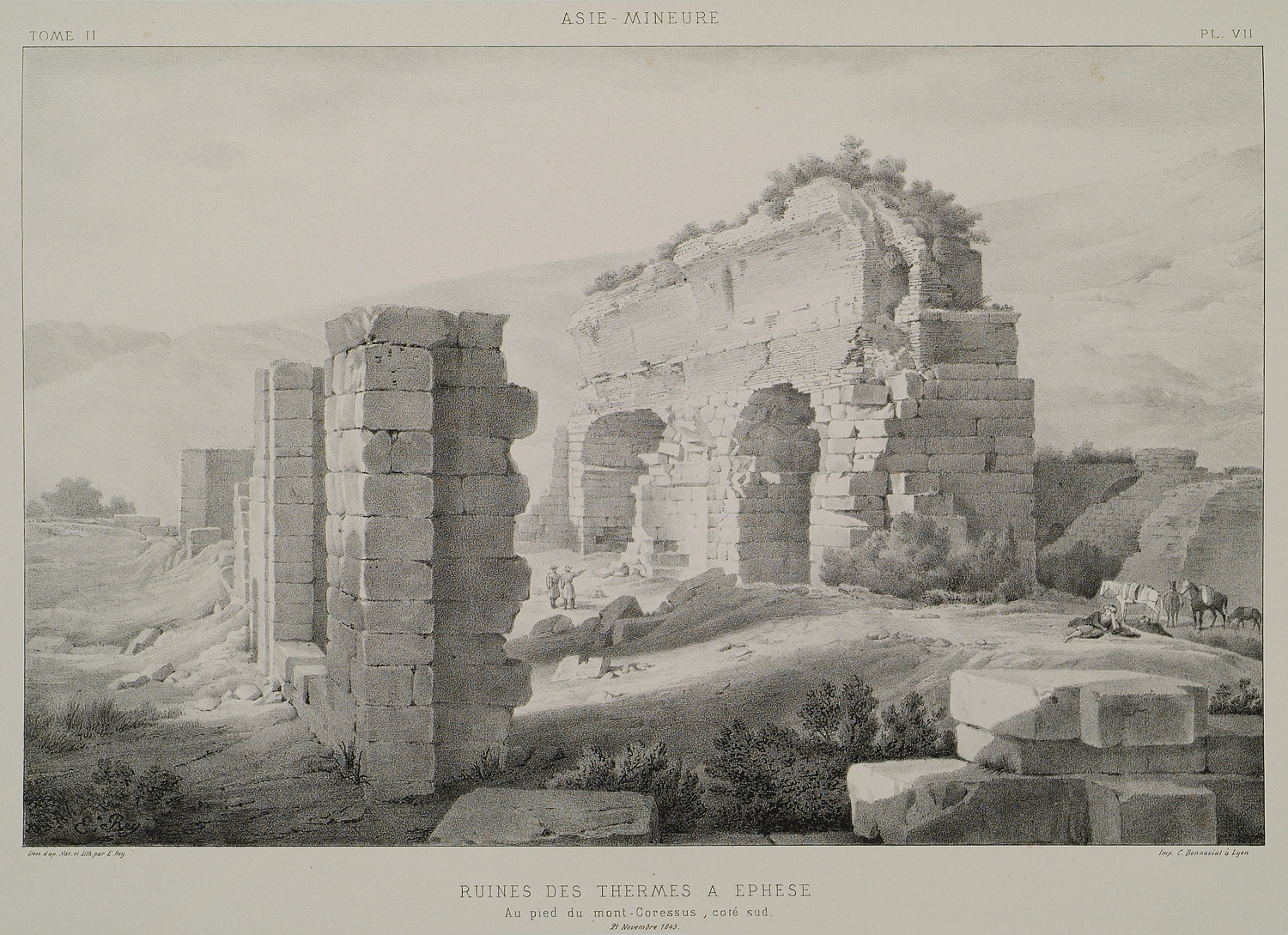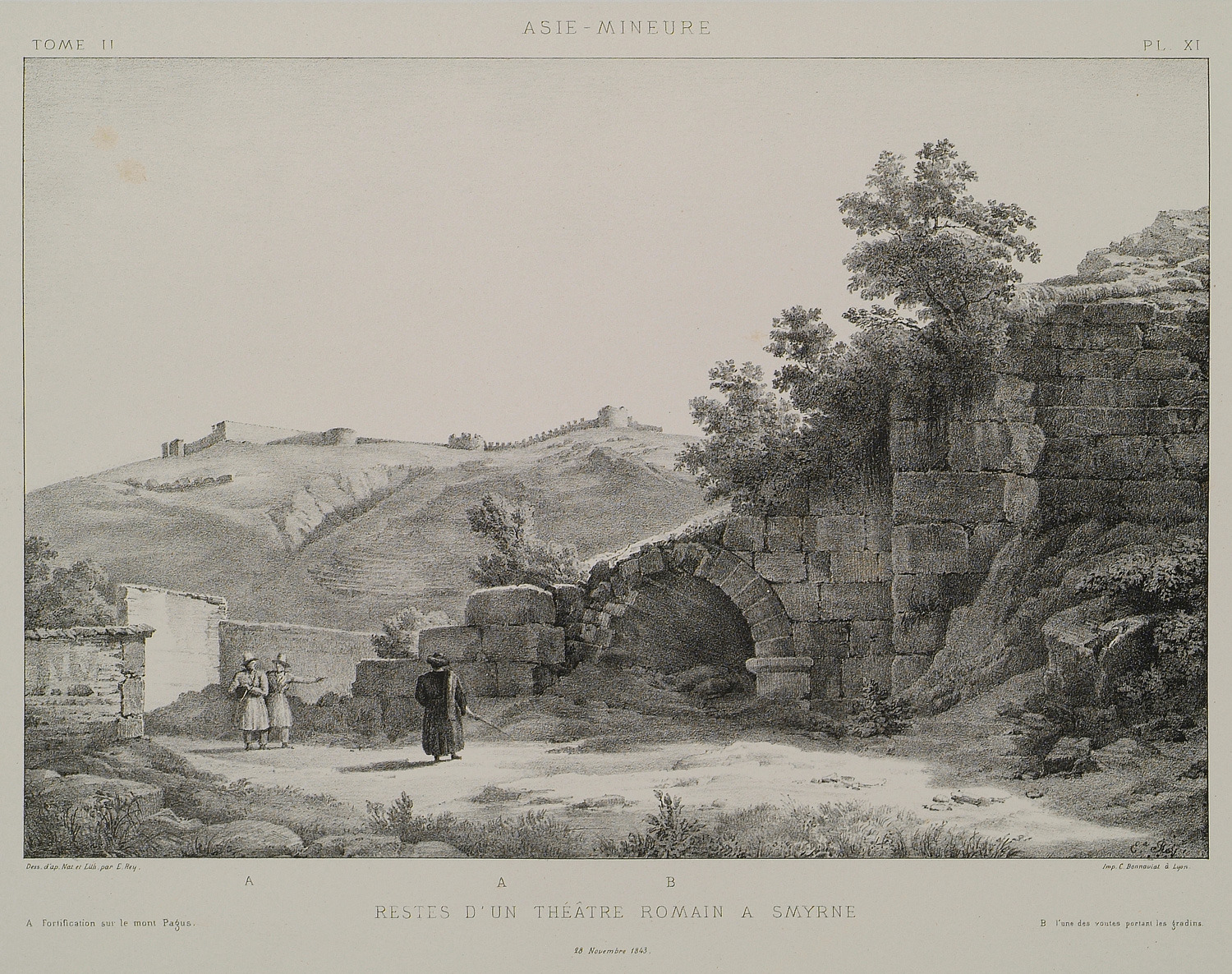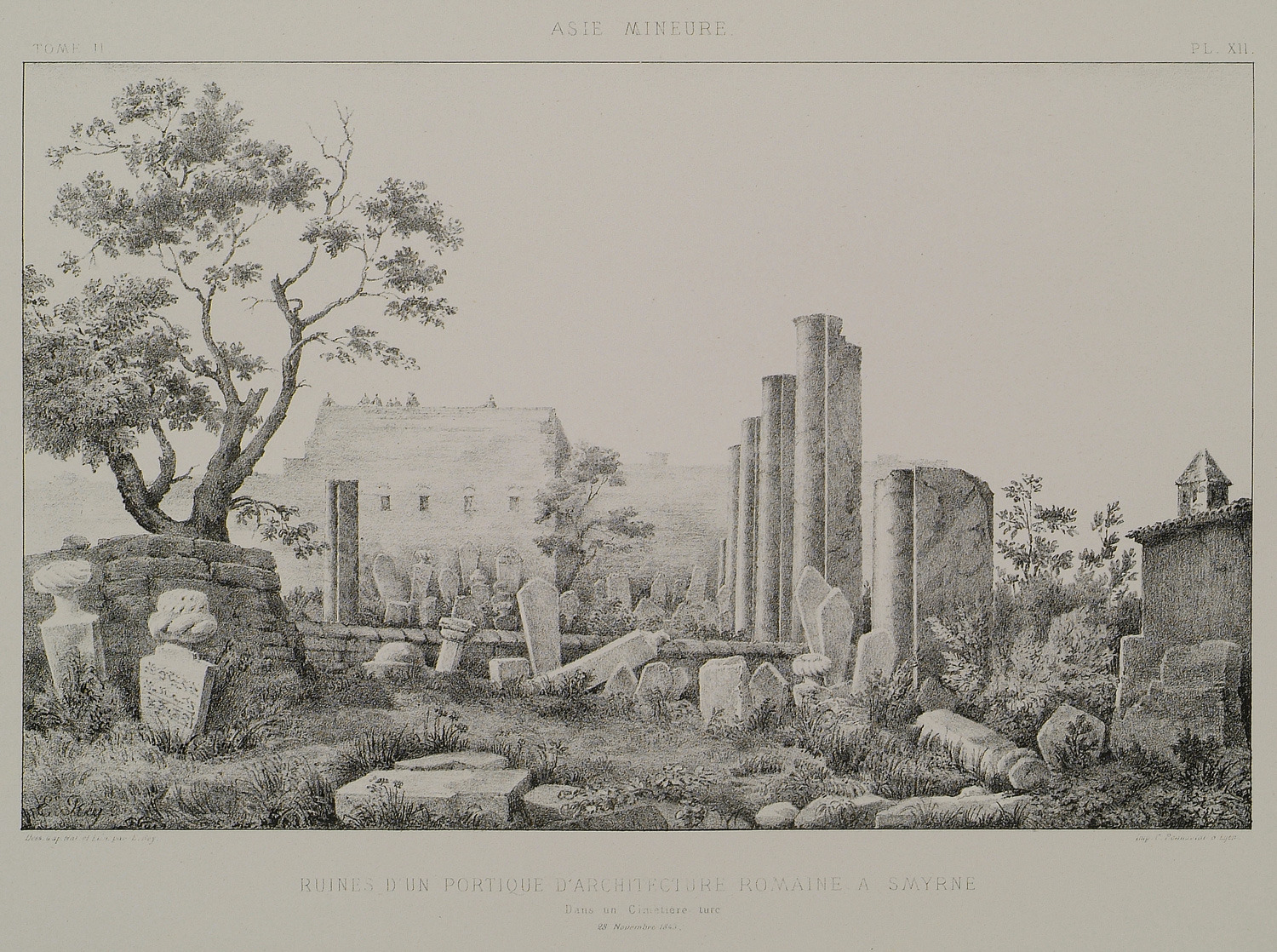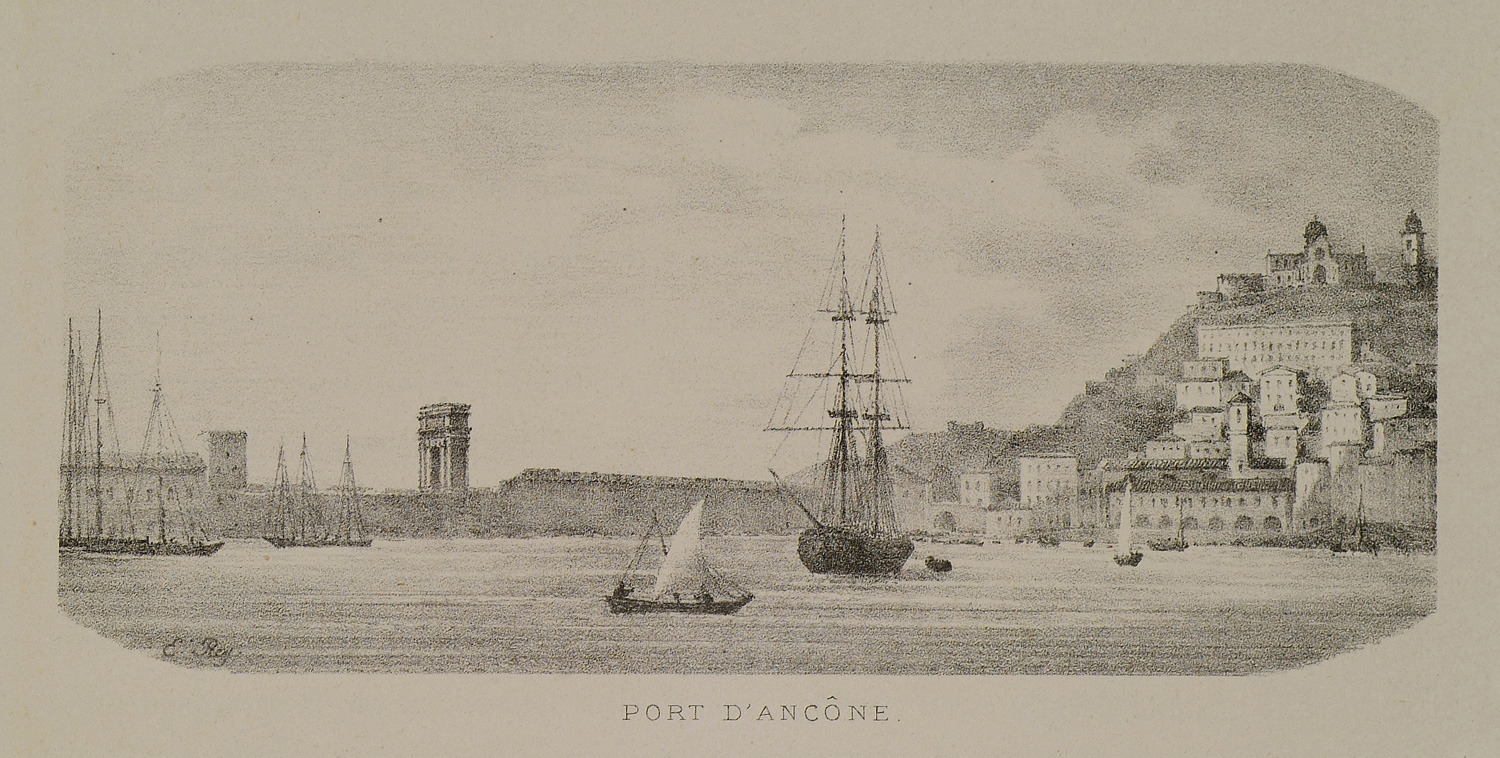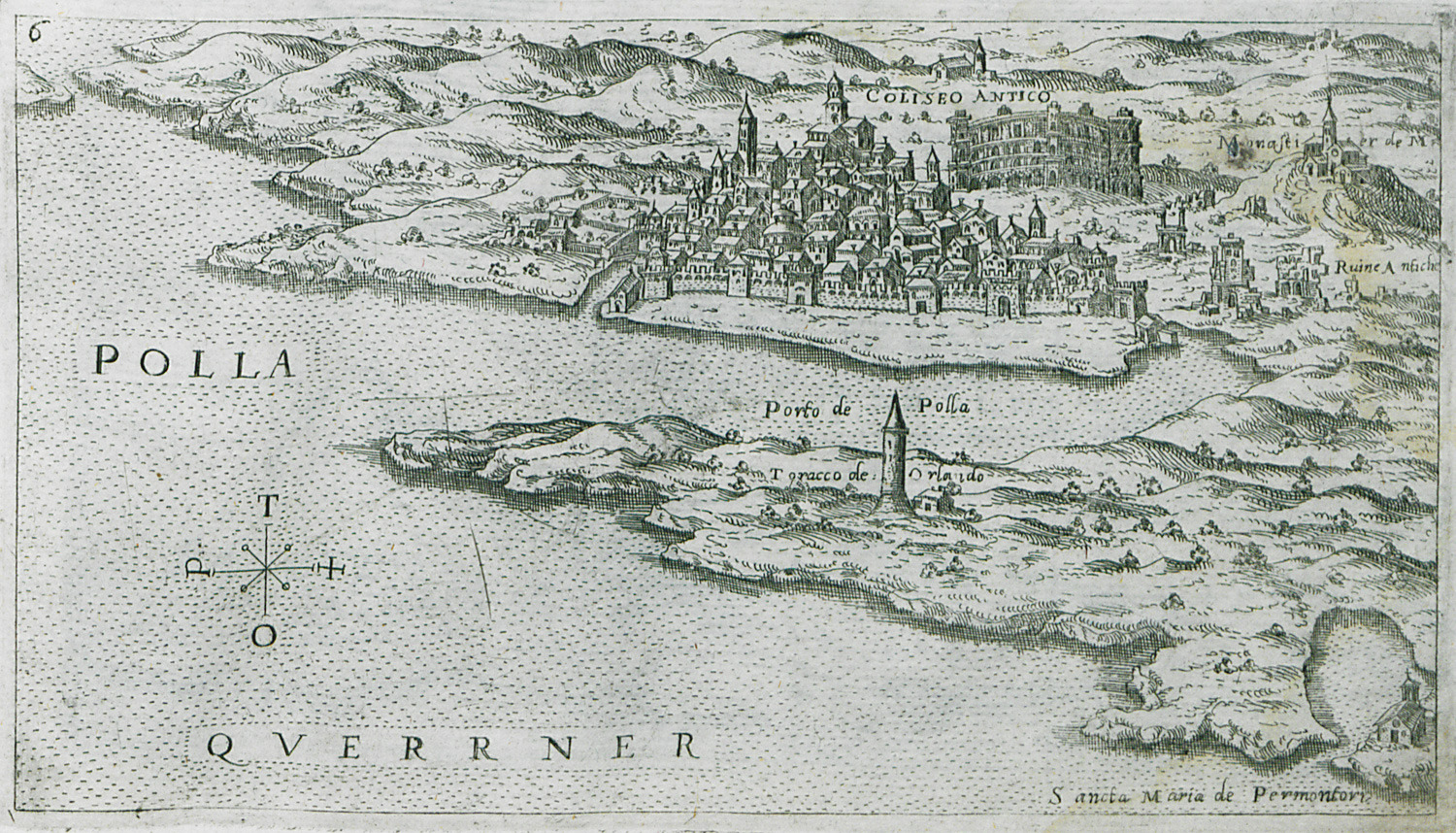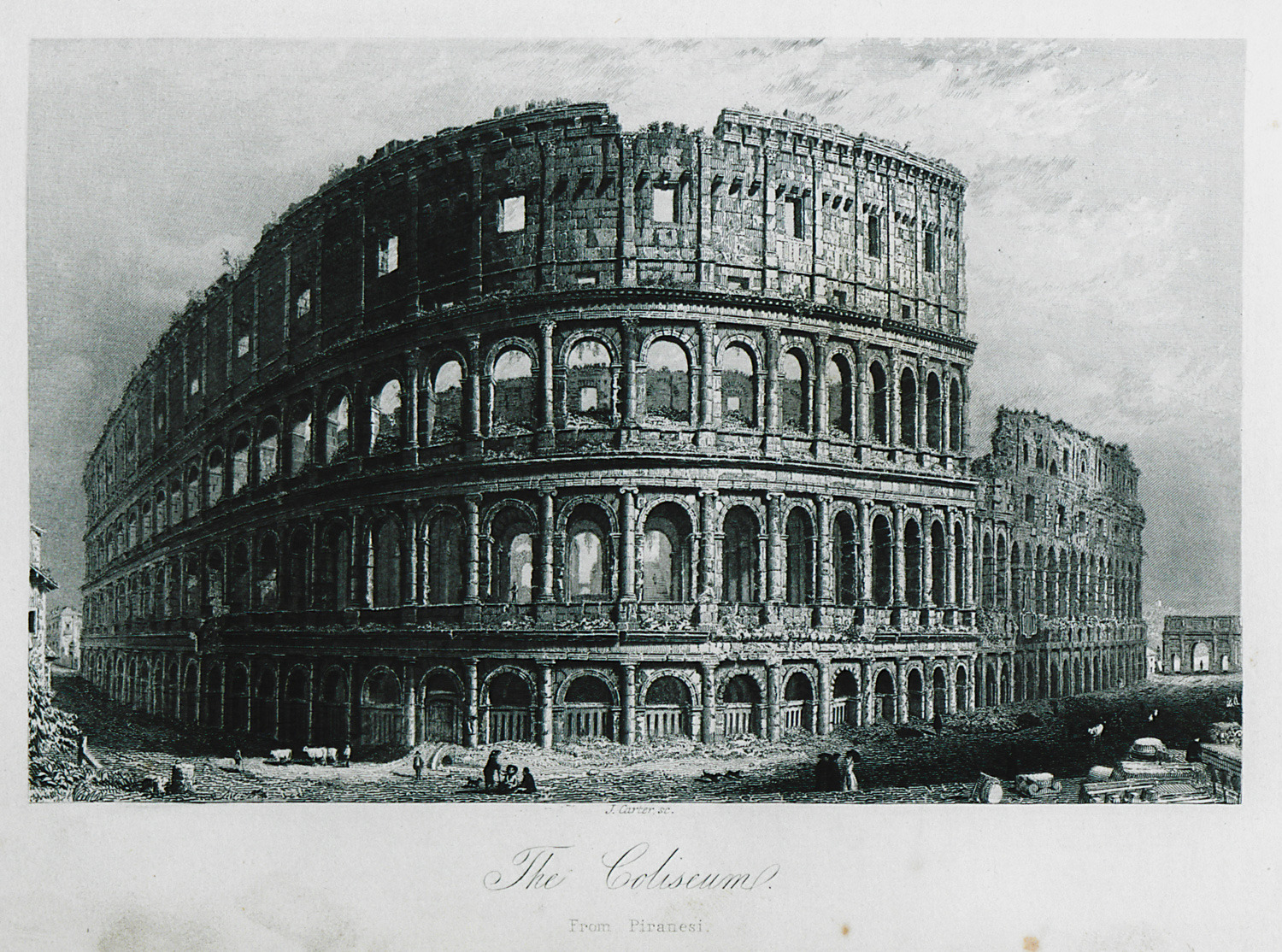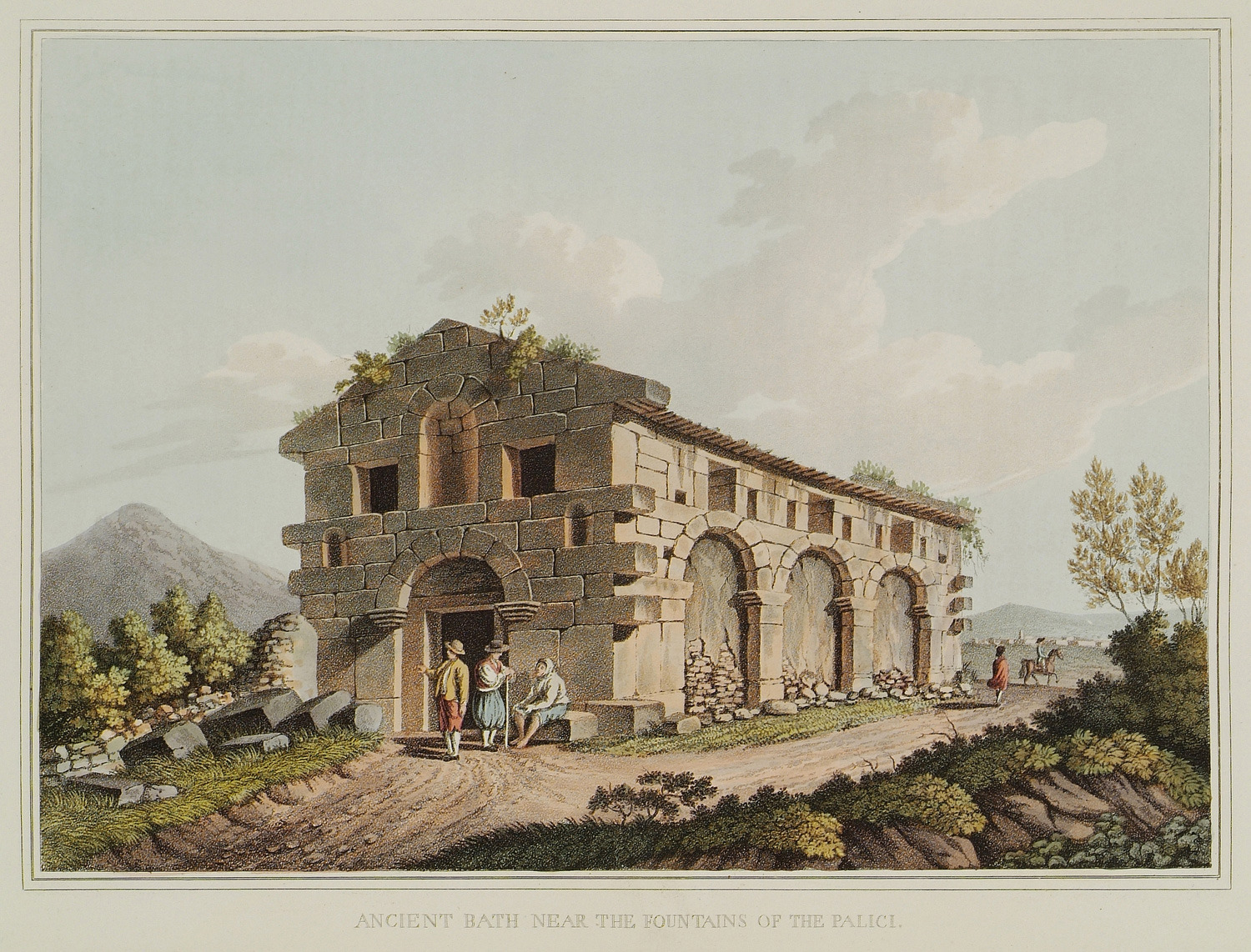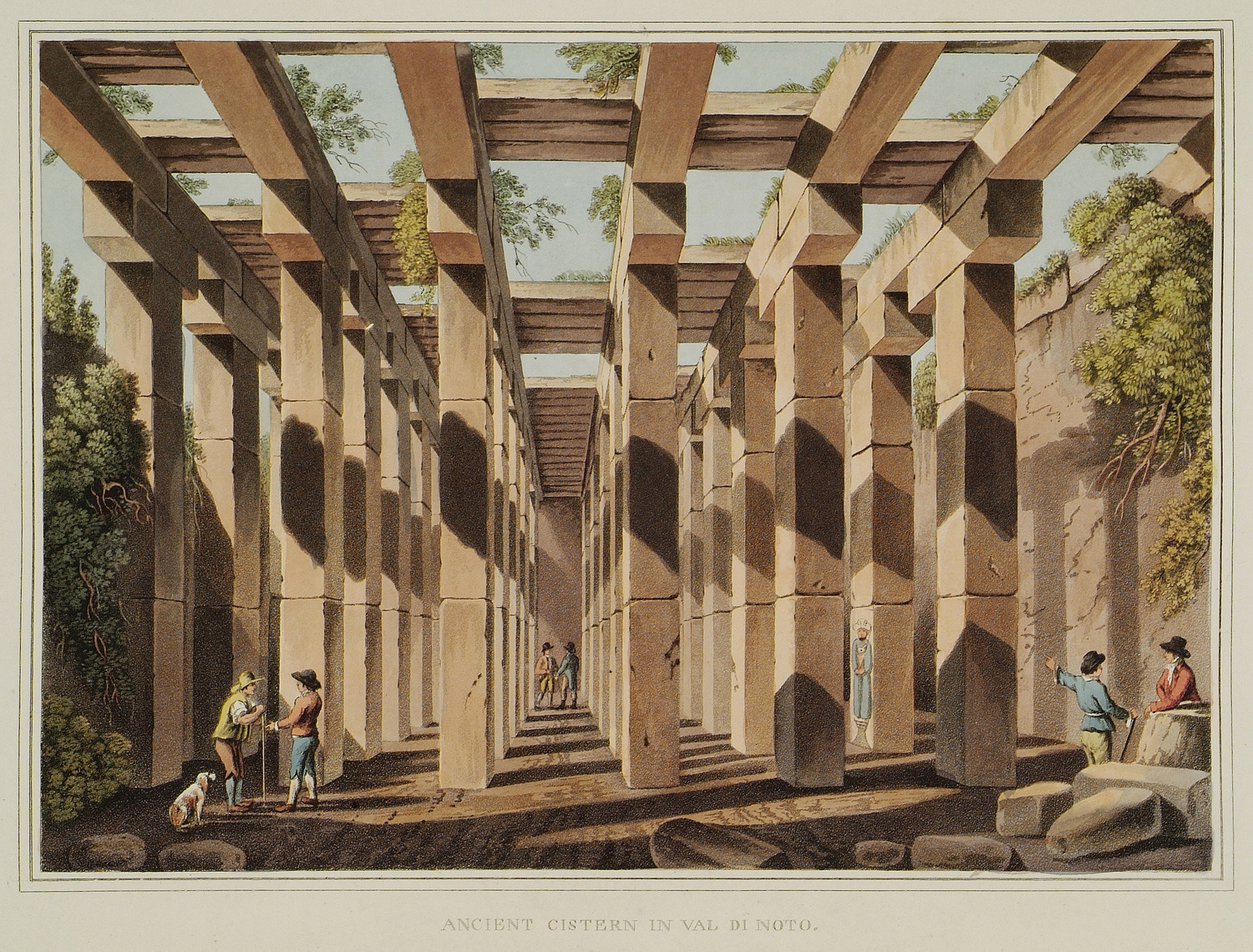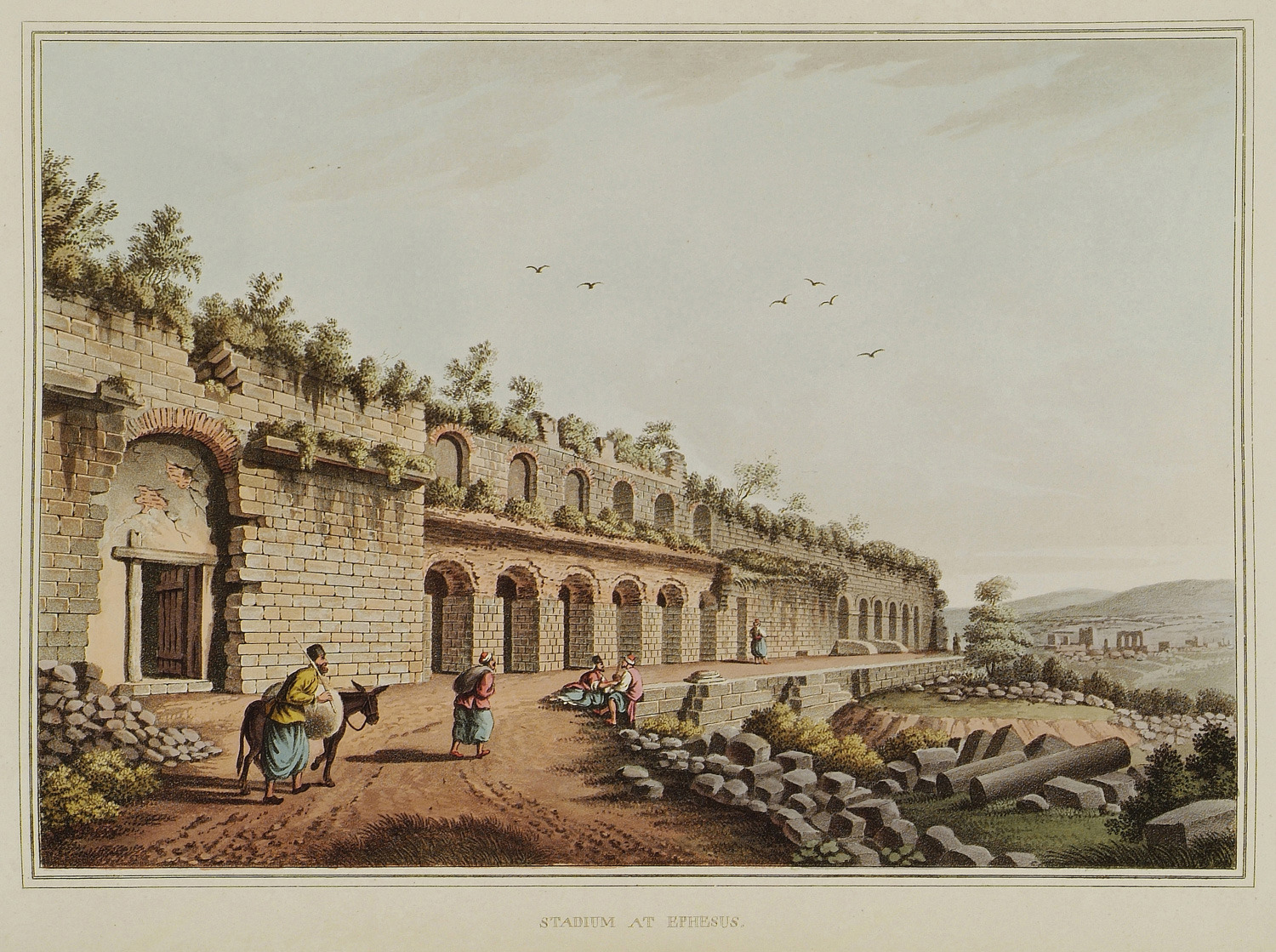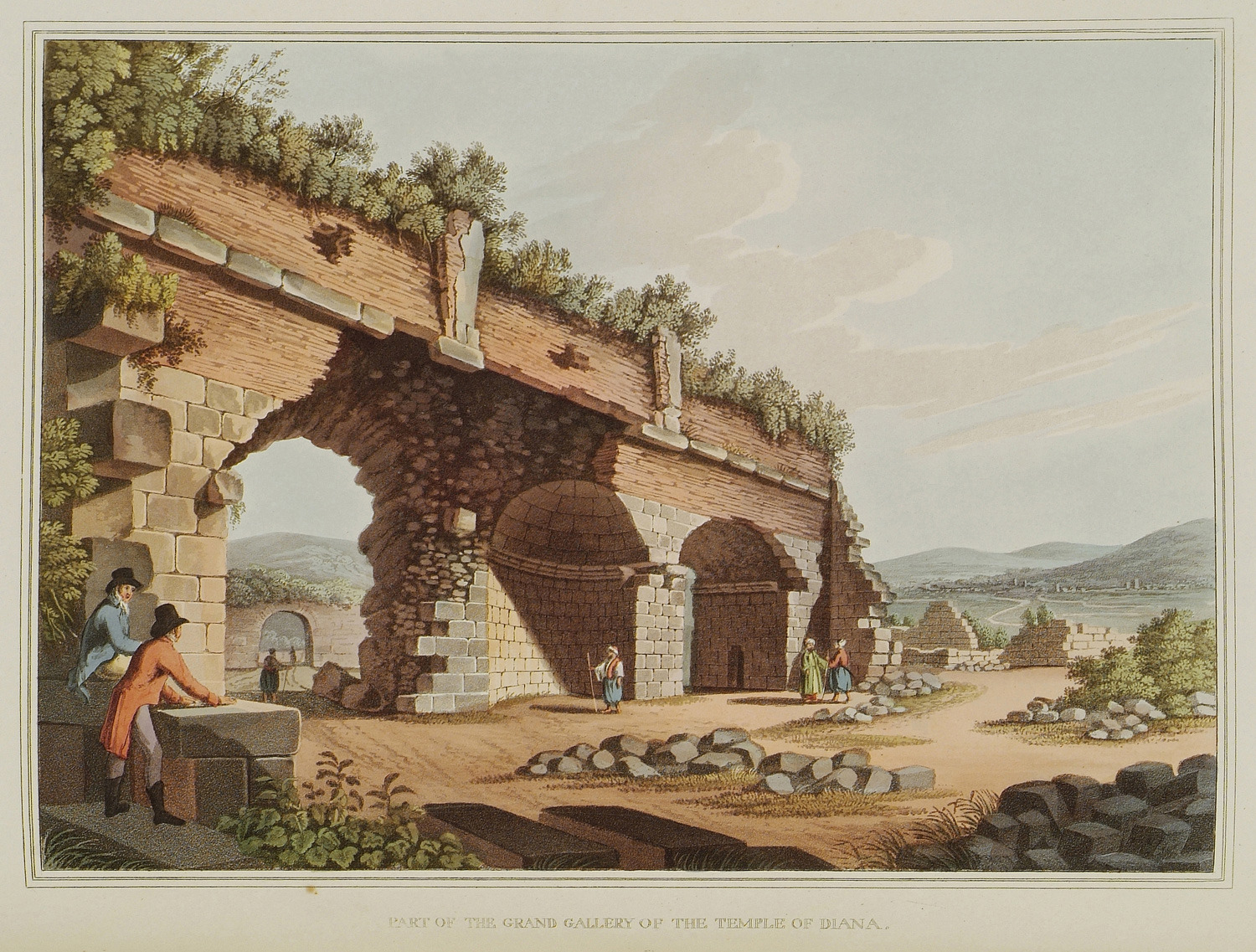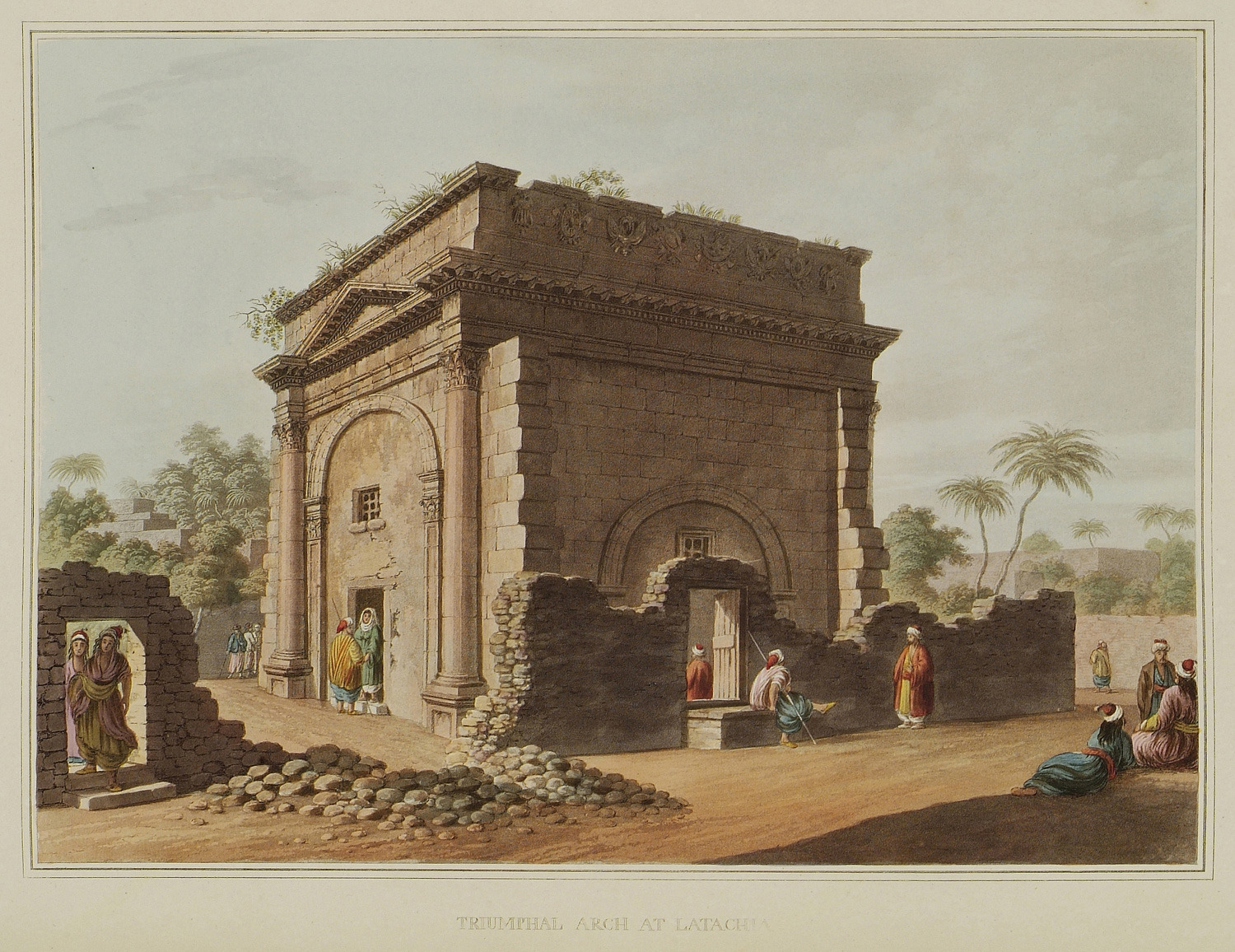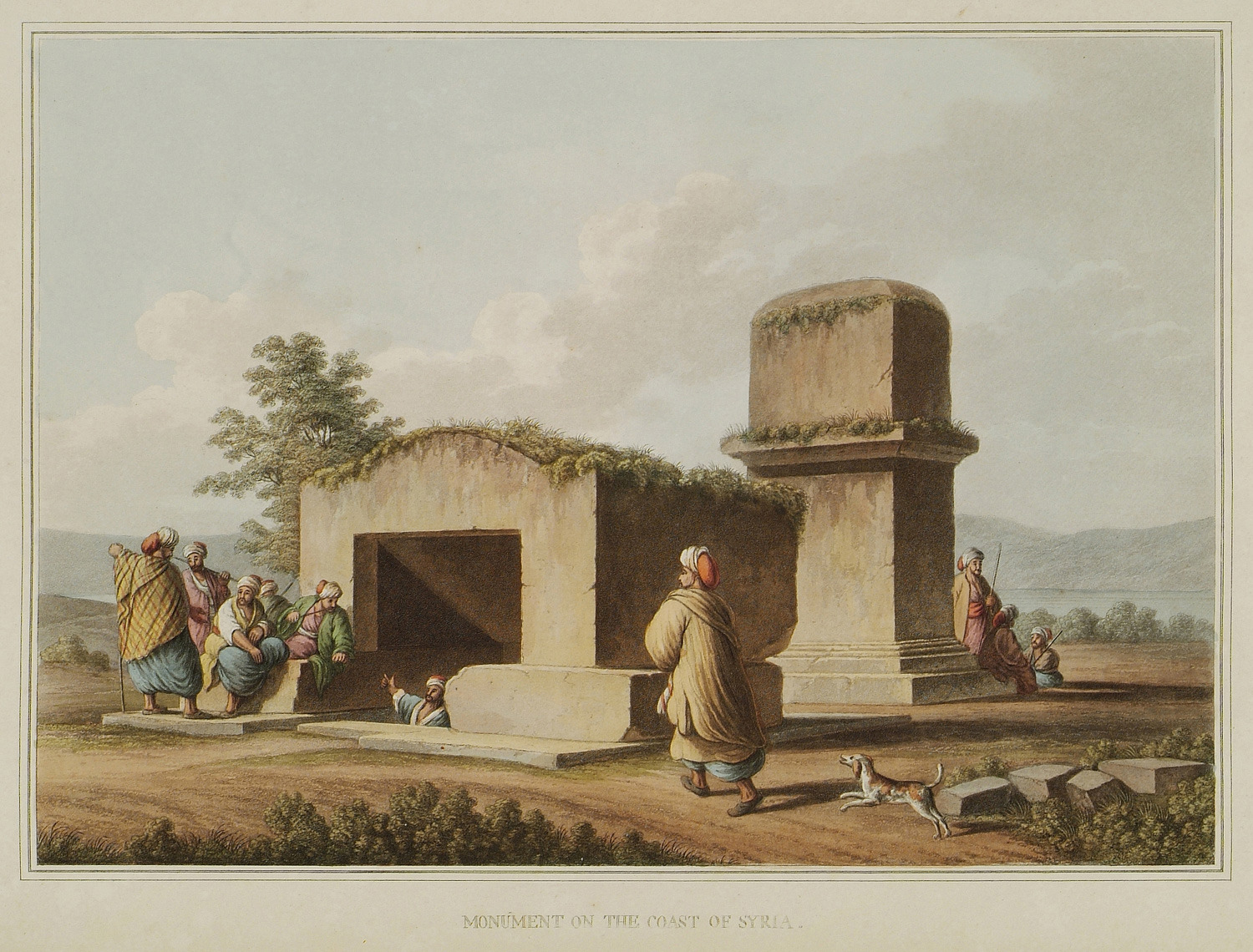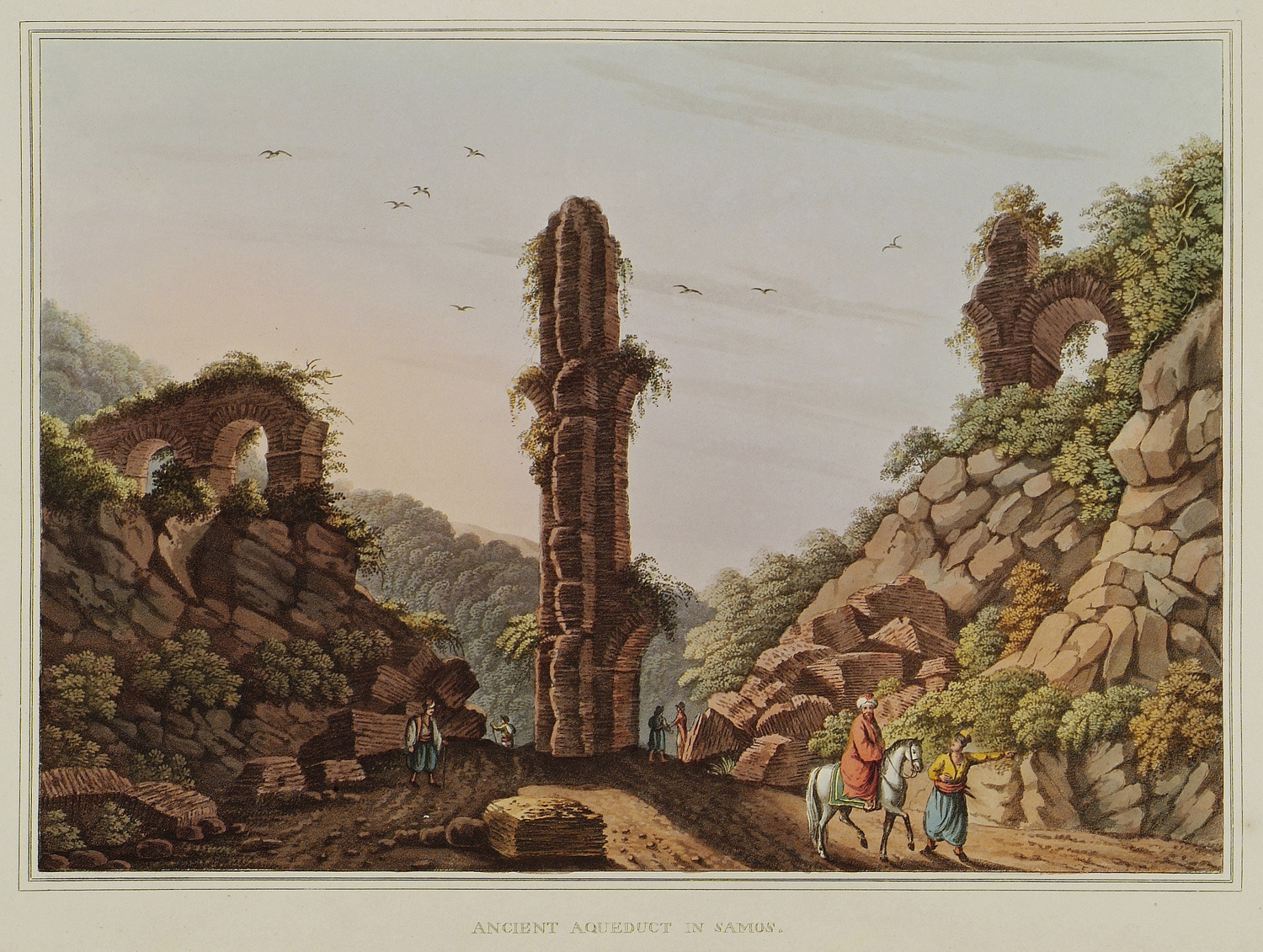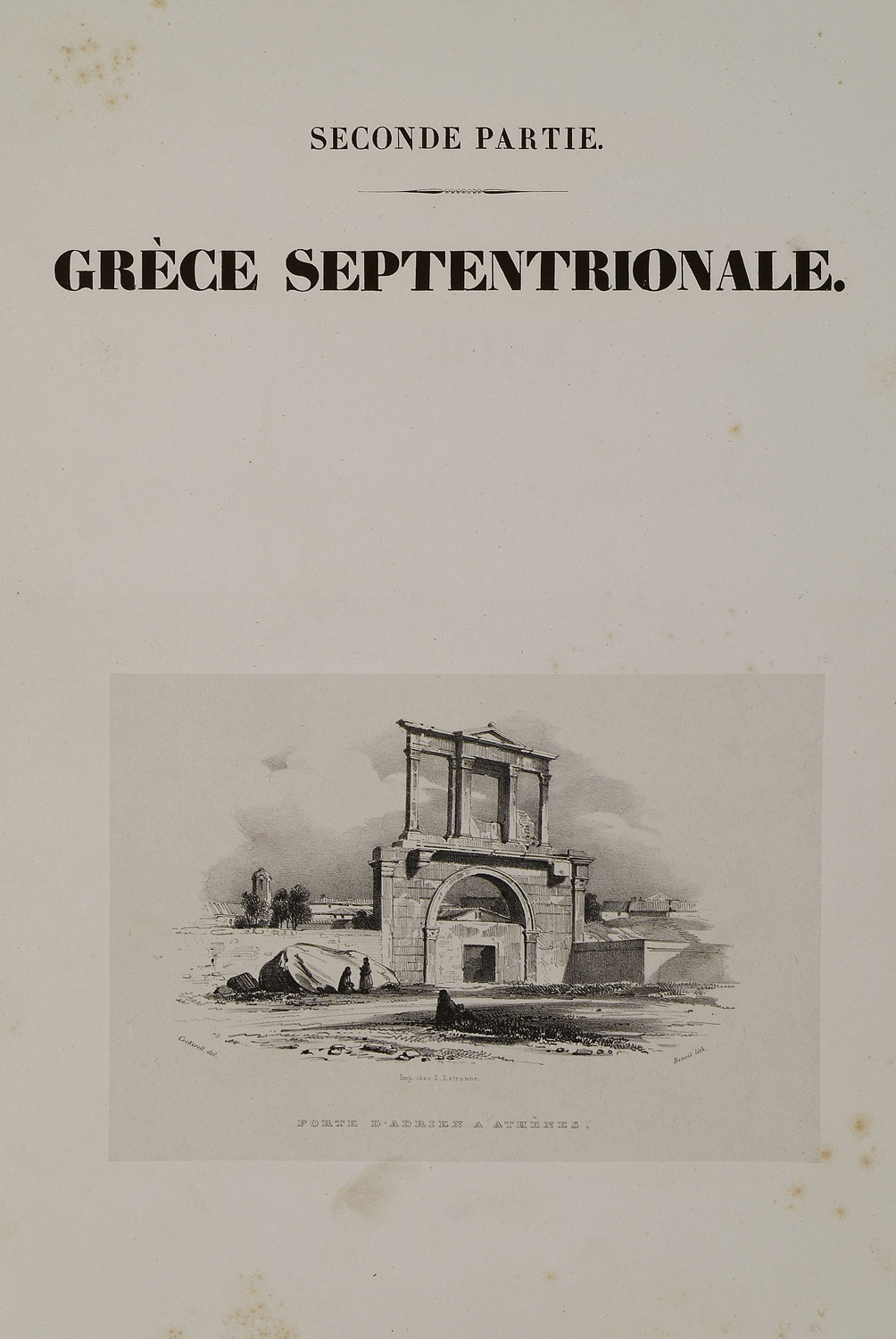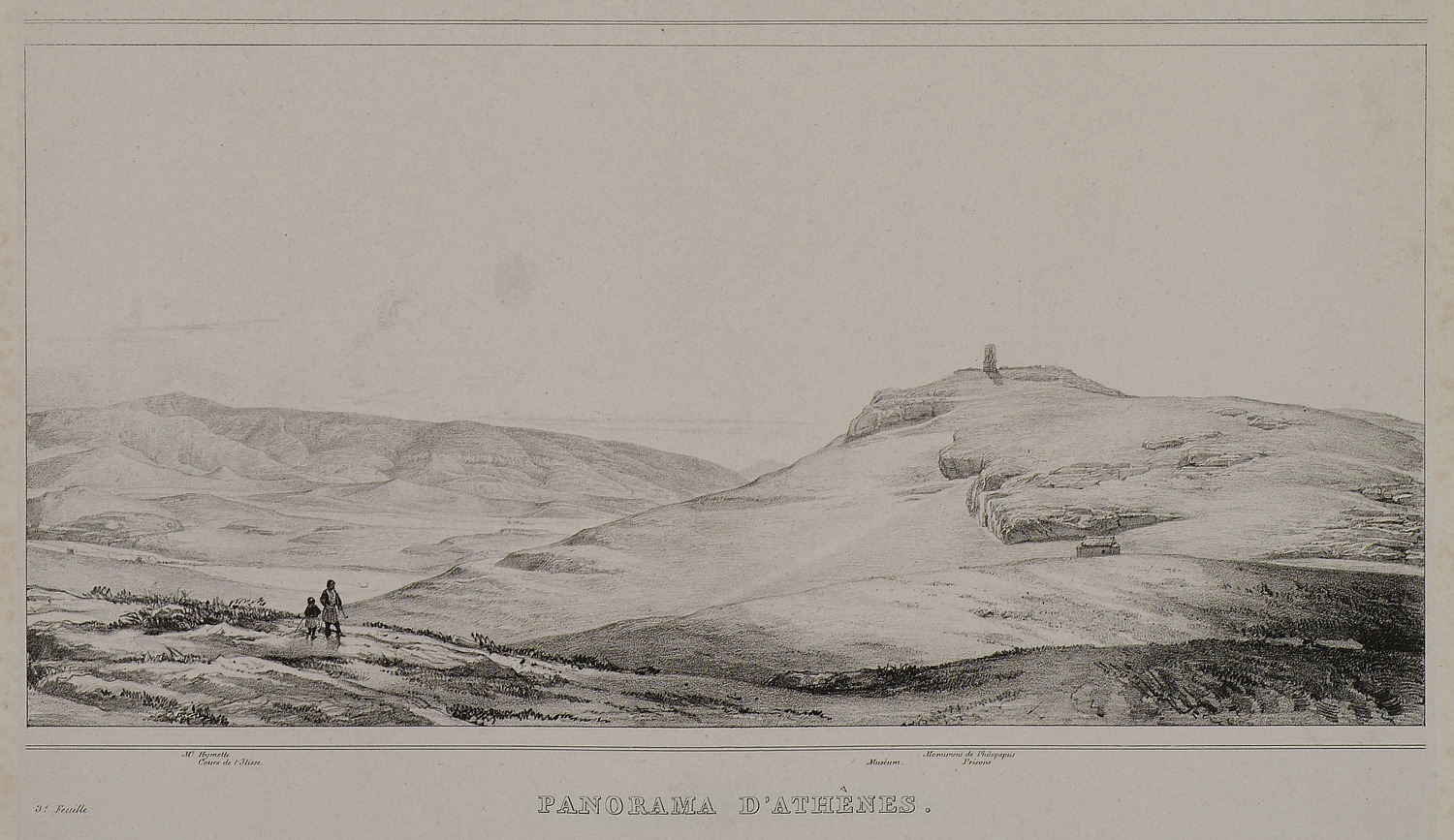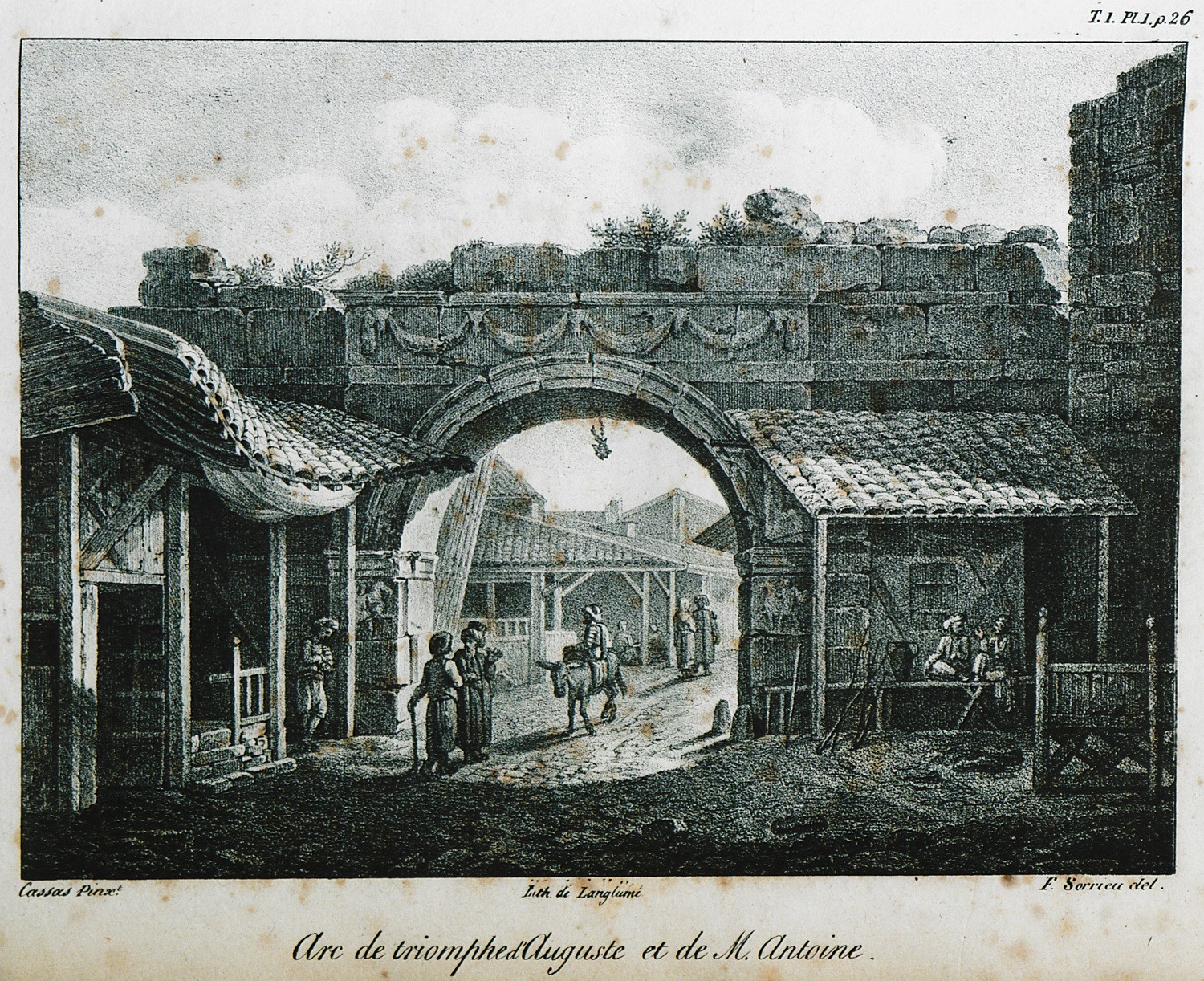Roman architecture (450 Subjects)
Frontispiece: Imaginary representation of the Propylaea of the Acropolis of Athens, together with a topographical map of the Acropolis of Athens and plans of its monuments.
Composition: The Odeon of Herodes Atticus together with the Temple of Hephaestus (Theseion) in Athens.
Hadrian's Library in Athens.
Composition: The Erechtheion together with the Gate of Athena Archegetis (mod. Pazaroporta).
Composition: Hadrian's Arch together with the area where the Odeon of Pericles, stood. In the background the Temple of Olympian Zeus in Athens.
Drawings of architectural elements from the Temple of Rome and Augustus in Pula, Croatia.
1, 4, 5: Drawings of architectural elements of Hadrian's Library in Athens. 2, 3: Plan of the Temple of Olympian Zeus in Athens, and plan of its court.
1, 2, 3: View of Hadrian's Arch and drawings of some of its architectural and decorative elements. 4, D, E: View of the Gate of Athena Archegetis (mod. Pazaroporta) in Athens. Architectural and decorative elements of the monument.
View of Agia Marina, Leros. On the left the Castle of Leros, also known as Castle of Panagia, which was initially constructed by the Knights Hospitaller. In the background the Bourtzi Fortress, dating back to the Roman era.
View of the amphitheater of Pompeii, Italy.
Roman mausoleum (today part of the church of Panagia Marmariotissa) in Chalandri.
View of the Odeon of Herodes Atticus in Athens.
View of the Choregic monument of Thrasyllus (Panagia Spiliotissa). On the right Hadrian's Arch and the Temple of Olympian Zeus.
The Temple of Olympian Zeus in Athens. In the background Hadrian's Arch. On the right, the Acropolis.
View of the roman baths of Varius in Ephesus, Asia Minor.
Ruins of the Hellenistic/Roman theater of Izmir, at Kadifekale (anc. Pagos).
View of the Temple of Ianus, erroneously called Temple of Homer, at Kadifekale (anc. Pagos), in Izmir.
View of the port of Ancona in Italy. On the right the lazaretto. On the left the Arch of Trajan.
Map of the city of Pula in Croatia.
The Coliseum.
Ancient bath in Palagonia, near Catania, Sicily. According to Roman myth, the three small lakes of the area were the birthplace of the Sicilian deities Palici.
A modern structure erected on the site of the ancient cistern in Val di Noto, southeastern Sicily.
The Roman stadium of Ephesus.
A Roman building at Ephesus, probably a bathhouse.
The Tetraporticon or Arch of Septimius Severus at Latakia (ancient Laodicea).
A monumental building on the coasts of Syria, possibly a Roman funerary monument between Tartus and Amrit, to the south of Tartus.
Roman aqueduct on Mount Kastron, Samos island. The aqueduct was connected to the Eupalinian aqueduct or Tunnel of Eupalinos, near the port of Pythagoreion.
Title page of the second part of the book. The Arch of Hadrian in Athens.
The monument of Philopappus in Athens.
Triumphal arch in the honour of Antonius and Octavius, victors of the battle at Philippoi. This now-lost monument was located in the Vardari area of Thessaloniki (today Dimokratias Square), to the west of Via Egnatia.


